I was always curious about Liechtenstein, a small European country nestling in the mountains between Switzerland and Austria. The country is five and half times smaller than Berlin and more than 40% of its surface is covered by forest. Only 11% is used for residential purposes. Just 11 villages and 35 000 inhabitants make up the country. Yet, Lichtenstein is small in size but has enormous stable economy based on manufacturing industries (tool engineering, plant construction, precision instruments and the dental equipment), construction, financial and insurance sectors.
The country’s picturesque landscapes, strong entrepreneurship of its citizens as well as relatively limited accessibility (Liechtenstein does not have airport nor train station) made me very curious about this place and it had been quite long on my to-visit list.
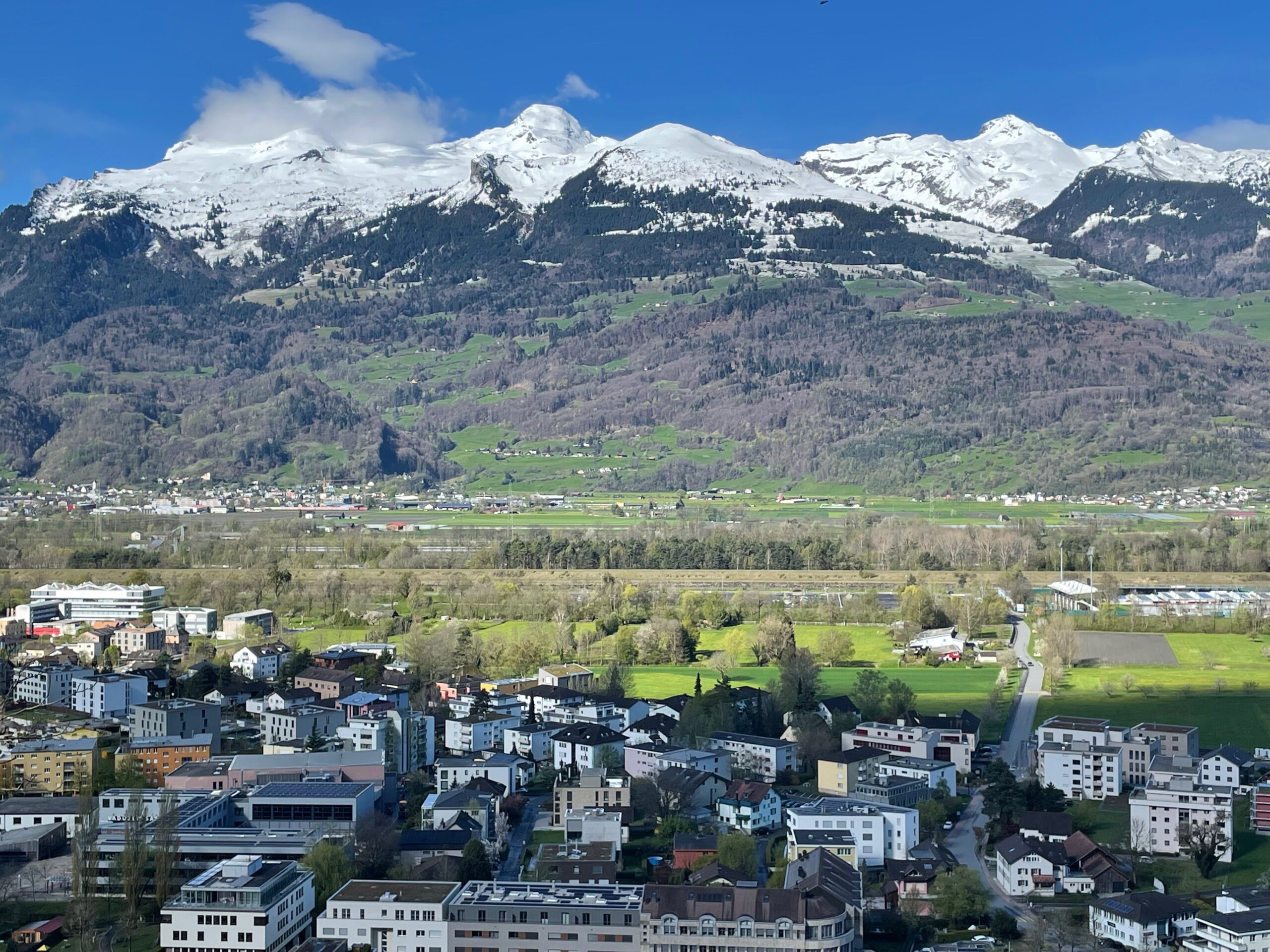 |
How to get to Liechtenstein:
Liechtenstein makes a good one day trip if you visit Zurich in Switzerland, you can drive there by car or take a train to Sargans or Buchs (in Switzerland), from there you can catch a bus to Vaduz which is the capital of Liechtenstein. The most convenient are buses 11 and 12E which will take you from Sargans to Vaduz in around 30 minutes. Service is reliable and quite frequent, you can check the departures online on Liemobil website which is the official operator in Liechtenstein.
Another way to get to Liechtenstein by public transport is to enter it from Austria. Get into train to Feldkirch and take bus 11, 13 or 14 to Vaduz.
I think that a trip from Zurich is very convenient. There is plenty of trains from Zurich to Sargans and the journey takes just one hour. Then you have a quick change to the bus and in another 30 minutes you’re in Vaduz. Trains from Sargans to Zurich operate until late so you can stay in Liechtenstein until evening.
Currency and mobile network:
The currency in Liechtenstein is Swiss franc and the country has its own mobile network. They have a deal with the European Union which means that you will not have roaming charges if you’re a client of the EU mobile phone operator. However, the country is so small that I was all the time switched between Liechtenstein’s and Swiss network and Switzerland does not have roaming deal with EU. This means that is best to ensure before that you have data package for Switzerland too in order to avoid large costs for Internet use.
In this post I will write about my one day itinerary in Vaduz and Balzers.
I have arrived to Liechtenstein at 8am and found the city immersed in the morning sleep. Shops, museums and most of attractions open at 10am and work until 5-6pm so you need to squeeze most of your visits in 8 hours. Fortunately, bakeries are already open so you can grab some coffee and small snack to get some fuel for rest of the day. Curiously, prices in bakeries and restaurants are lower than in Switzerland so you may want to grab your sandwich in Liechtenstein rather than in Swiss train station.
Since there is not many opportunities for cultural visits until 10 I decided to have my morning climb to Vaduz Castle where the Prince of Liechtenstein lives with his family. The castle itself is not possible to visit but you can go around. During my stay, the building was undergoing some extensive renovation and was completely covered in steel frames. However, I still recommend having a walk since from the hill on which the castle is located you can admire beautiful panoramic views at Vaduz and surrounding mountains. As you go up you also pass many local houses and can overlook their architecture, adjacent gardens and in general see a bit how people in Liechtenstein live. The final part of the hike (it’s really short, count around 20 minutes up but it usually takes longer if you stop for pictures or just looking at the landscape) goes through nice nature area (but still far from being a forest) and I found it very refreshing in the morning with pleasant smell of wet ground and spring flowers (I visited in April).
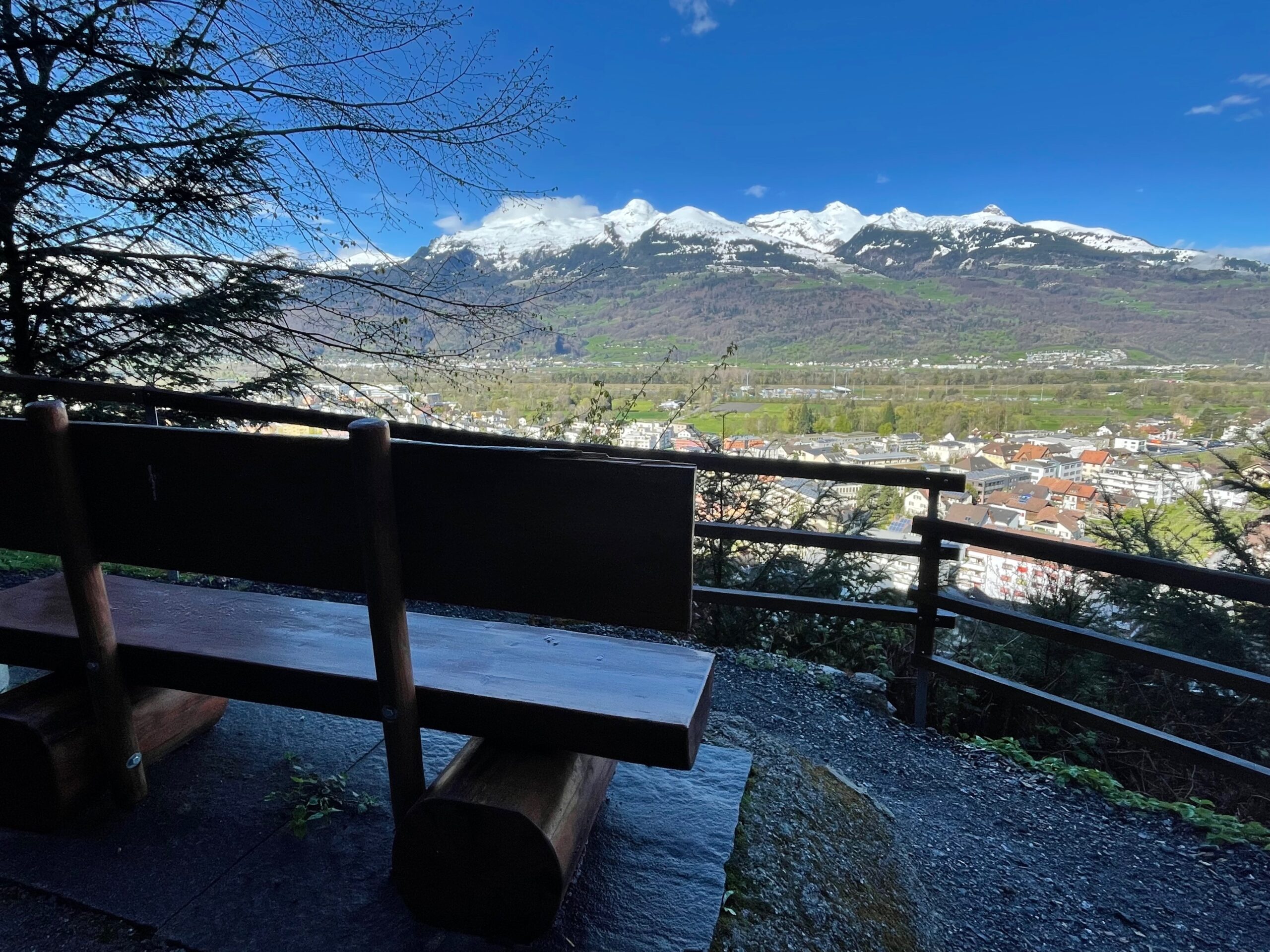 |
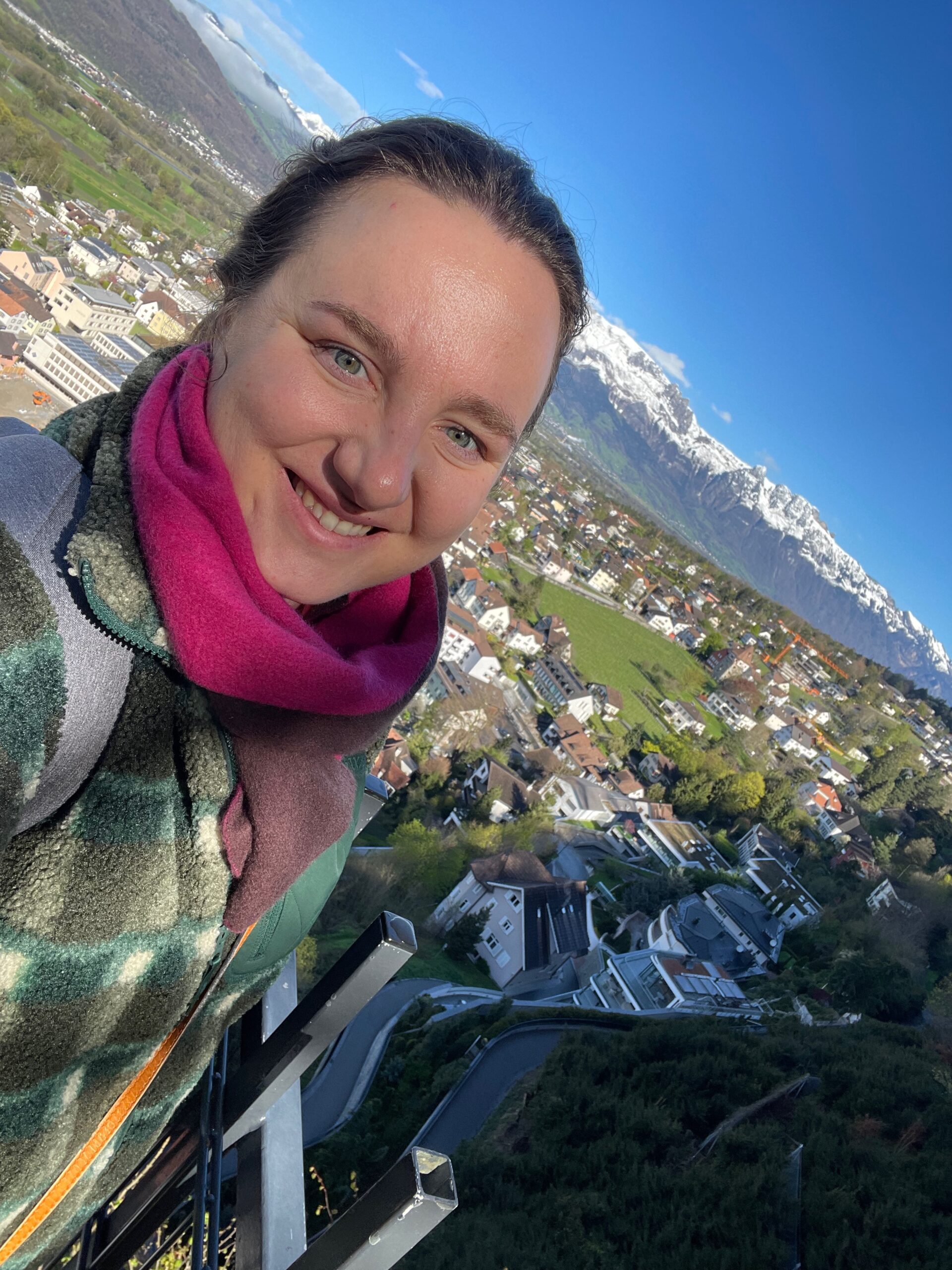 |
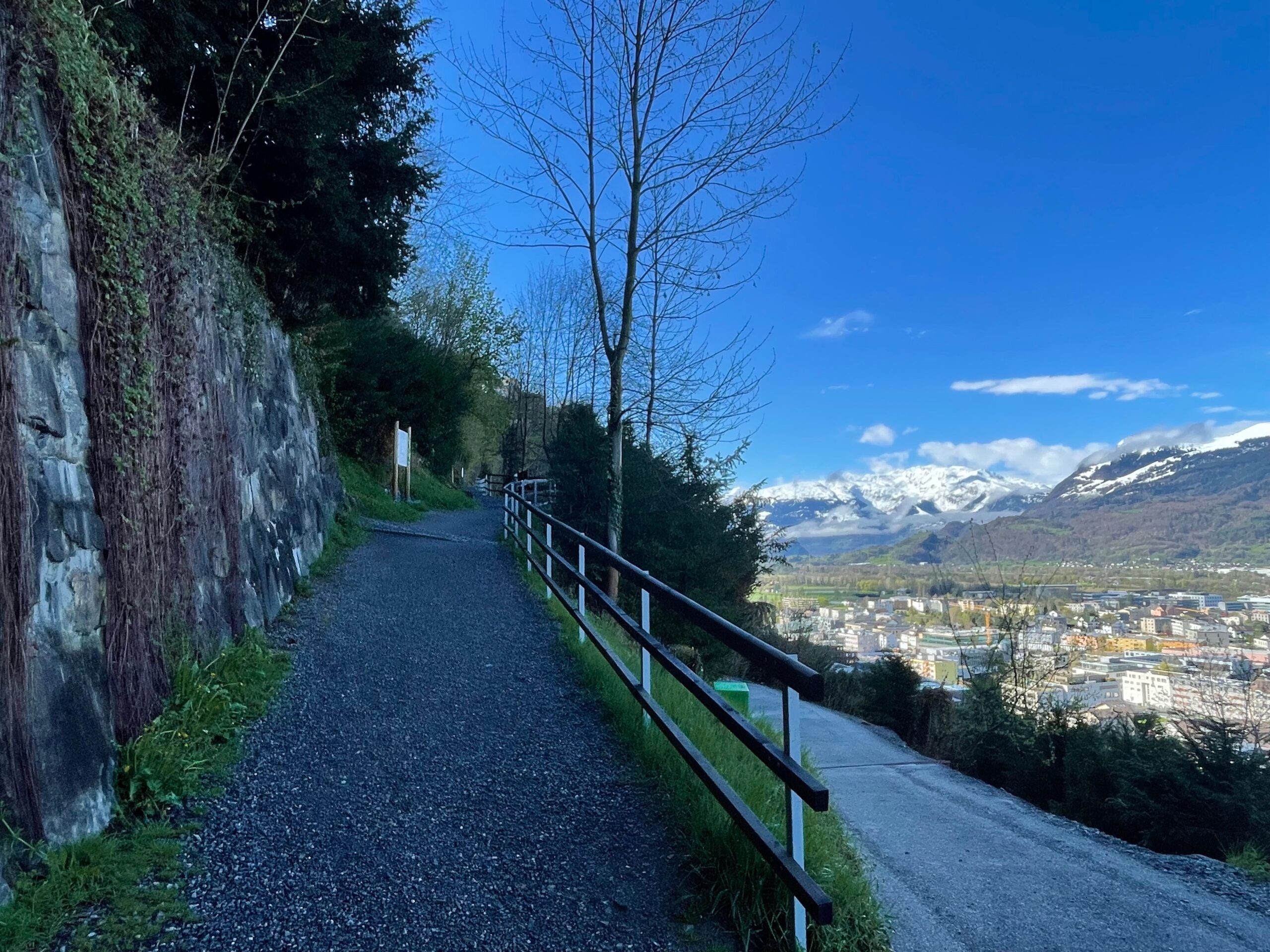 |
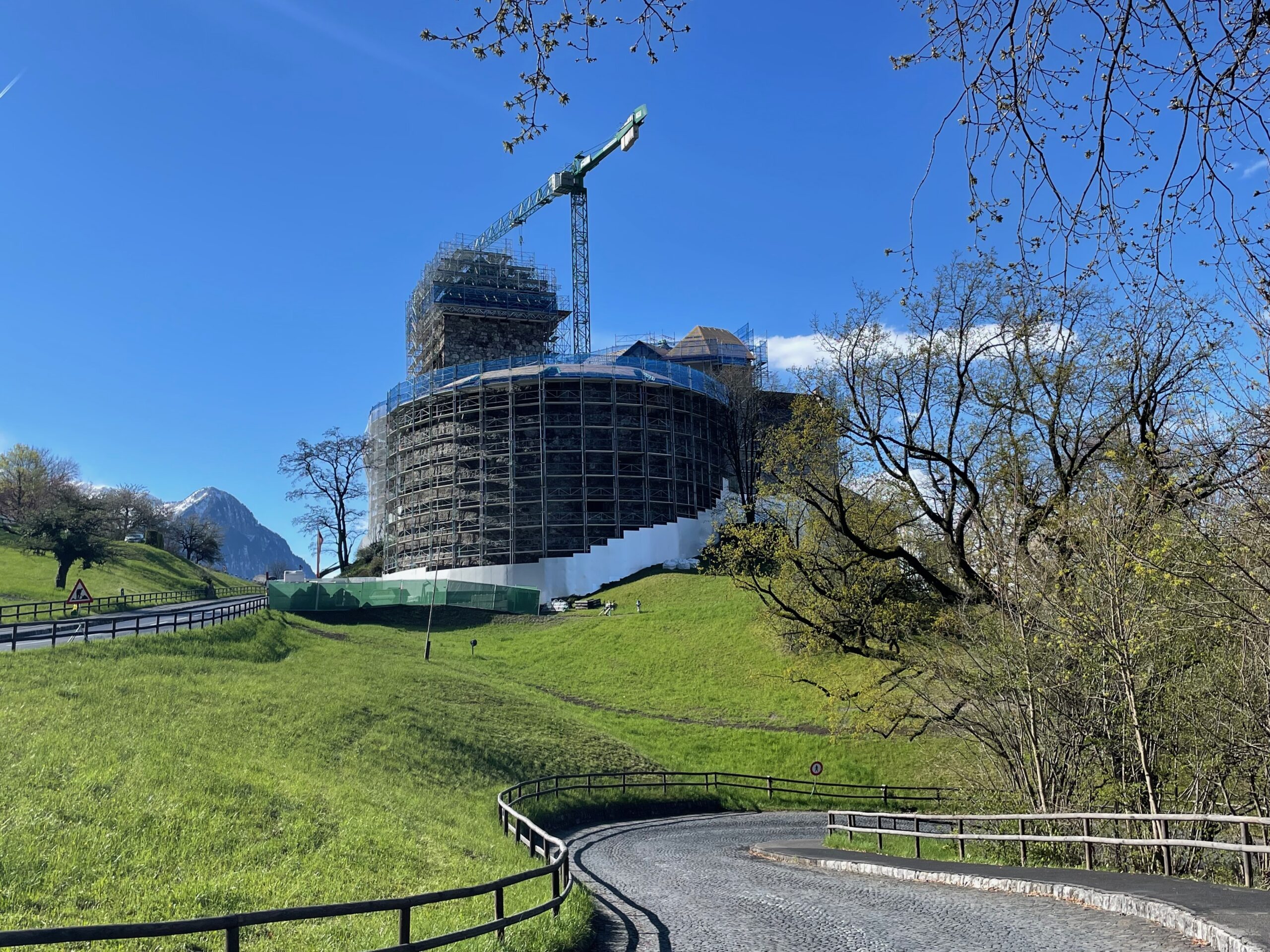 |
After very pleasant hike to Vaduz Castle I came back to the city center which is in fact mostly Städtle street where major museums and institutions are concentrated. Before my visit I heard few opinions that the country is only about this one street which you can walk through in 2 hours and be done with Liechtenstein but I think there is plenty of things to discover even for another 2 days (hikes, other villages, time in the nature). Having said that though I still spent a lot of time on Städtle street 😉
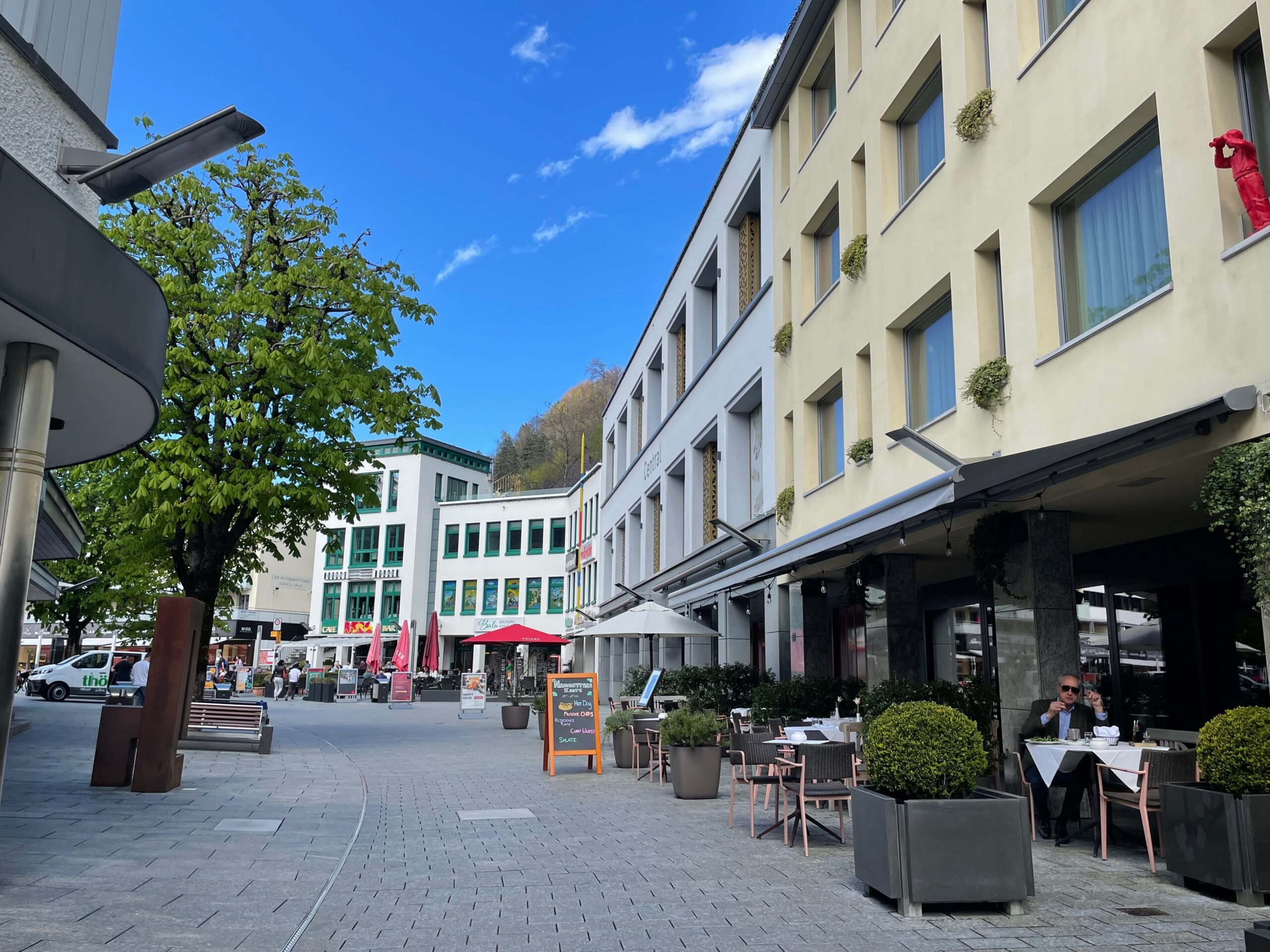 |
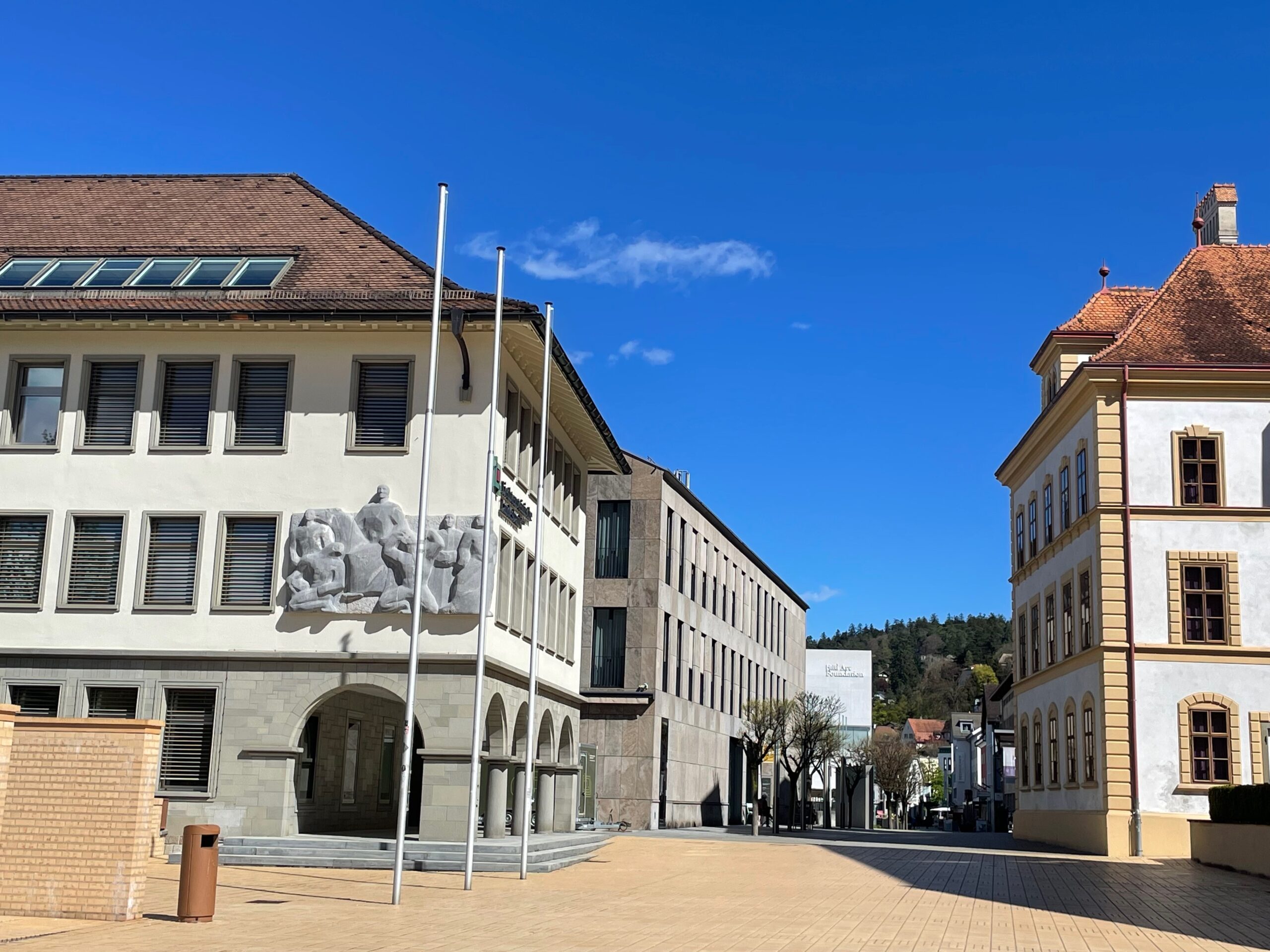 |
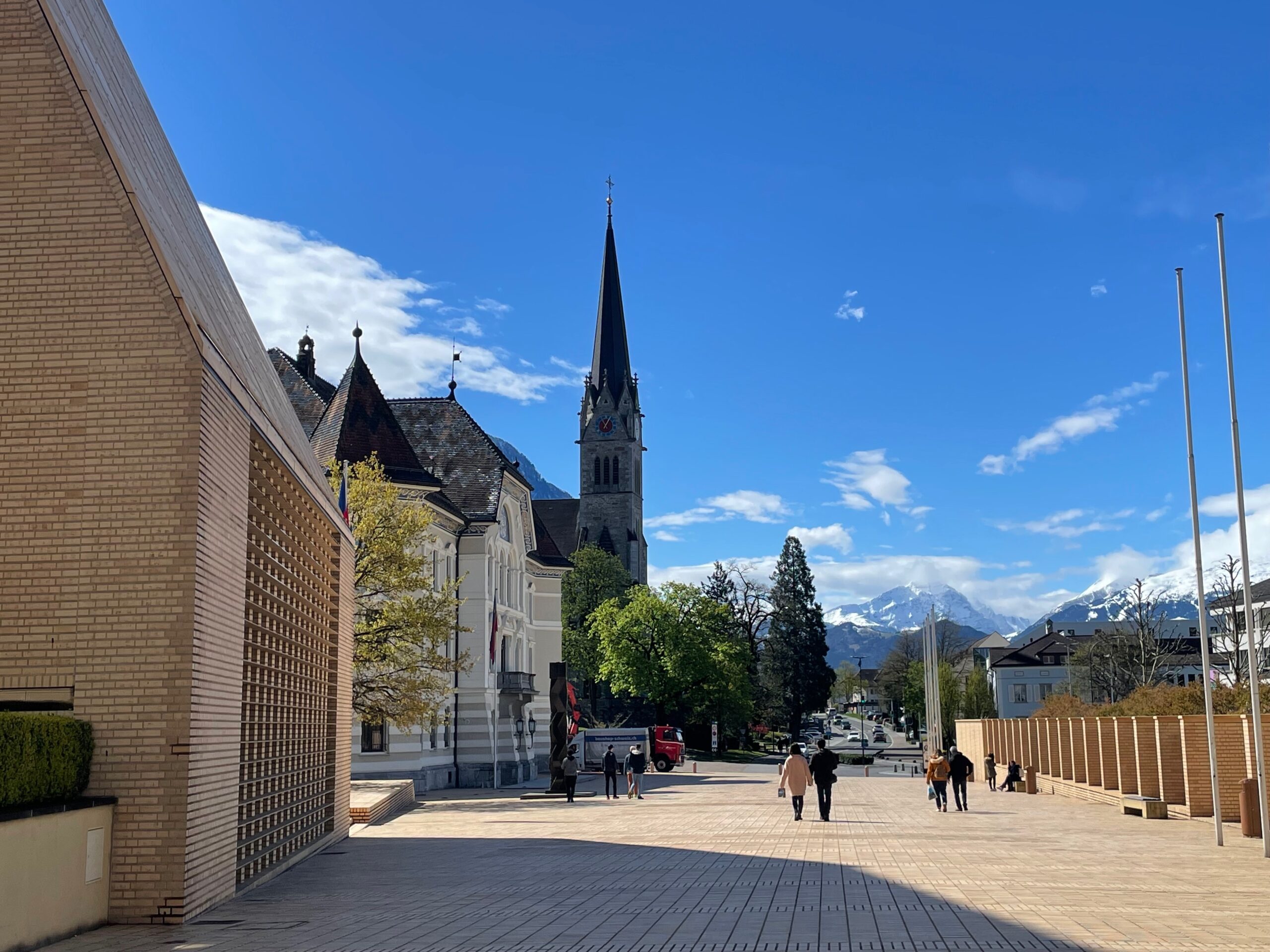 |
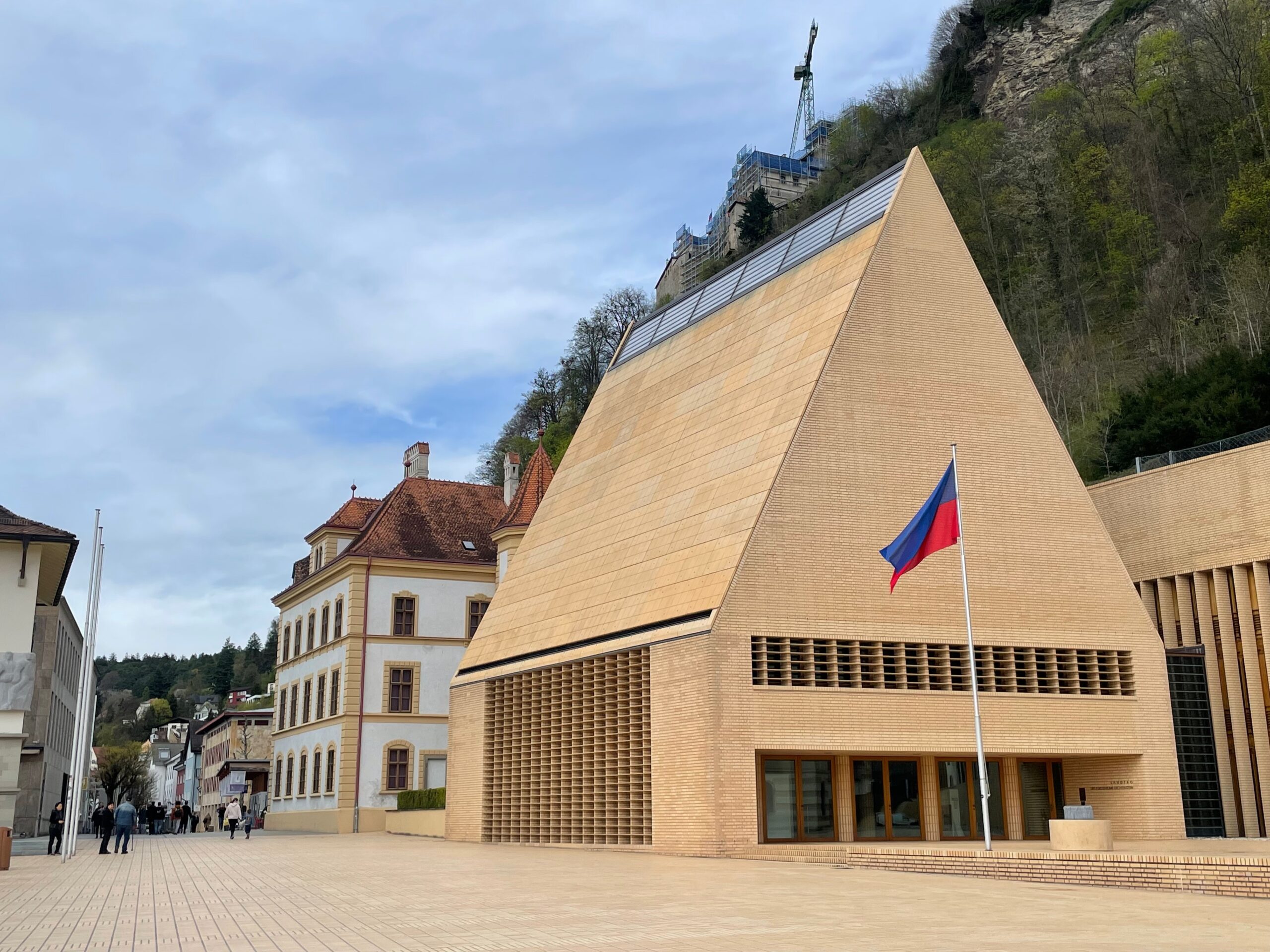 |
I have decided to start with museums which are open mostly from 10 to 5pm. You can choose from Liechtenstein National Museum, Treasure Chamber, Kunstmuseum, Postal Museum and English Building Art Space.
I have visited 2 museums, first of them being Postal Museum. Liechtenstein’s postal stamps are very famous and are valued and sought after by philatelists all over the world. The Postal Museum of the Principality of Liechtenstein has a collection of all postage stamps issued in the country since 1912. The stamps became very famous due to their rarity as well as fine aesthetics and sophisticated techniques. Many of the stamps are true artwork and were created by established artists. In the museum you will also find documents and equipment needed to create the stamps.
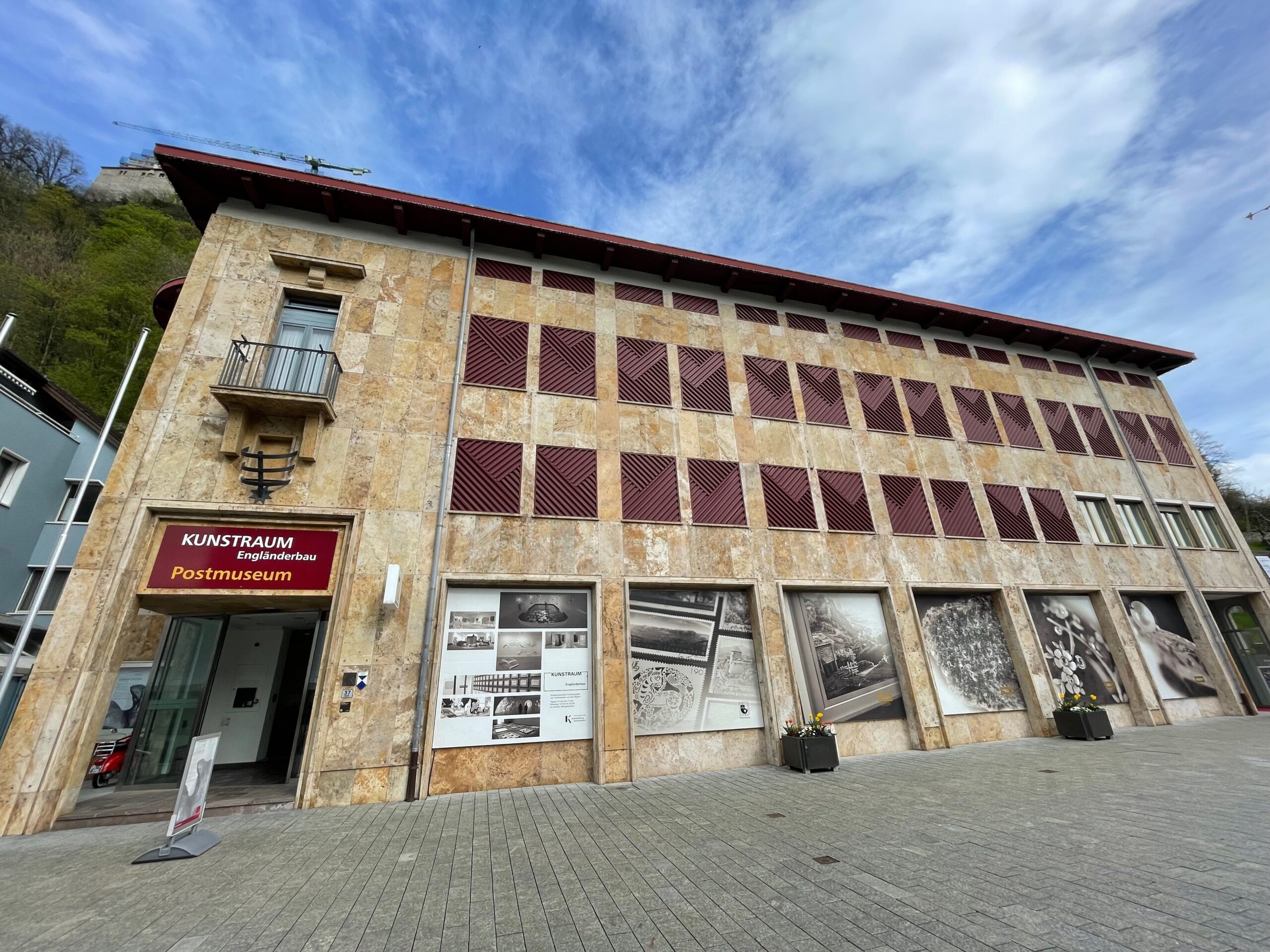 |
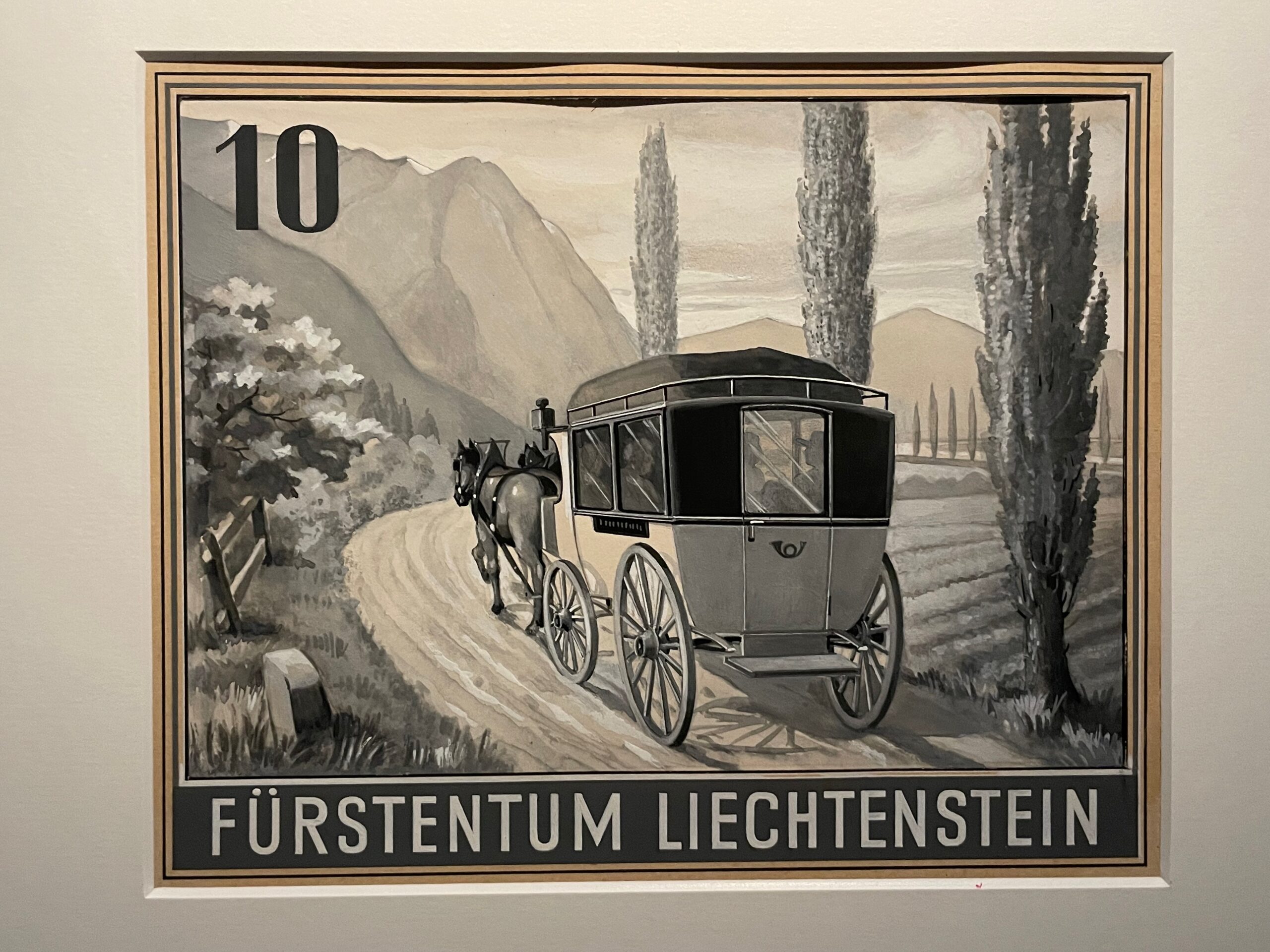 |
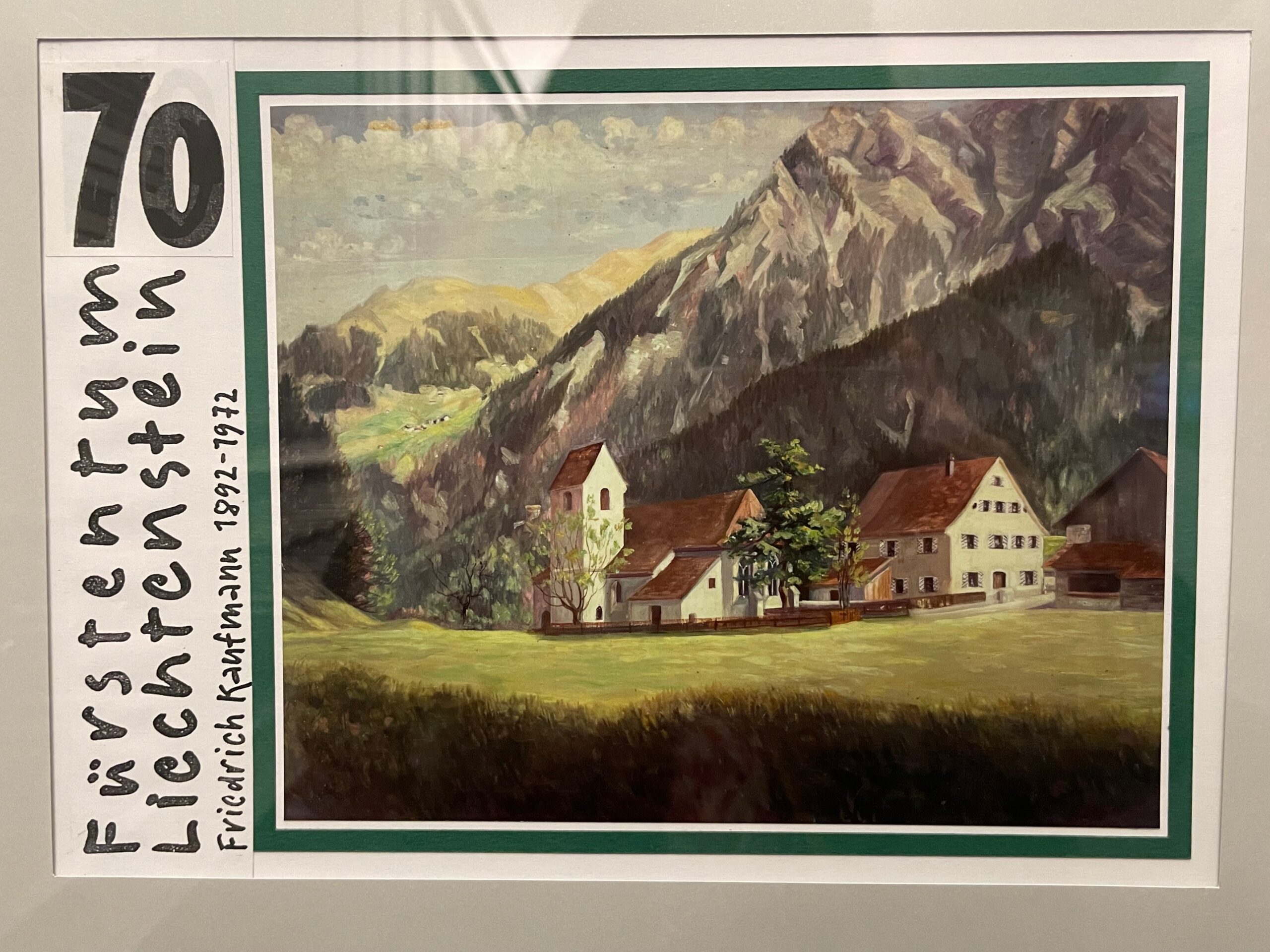 |
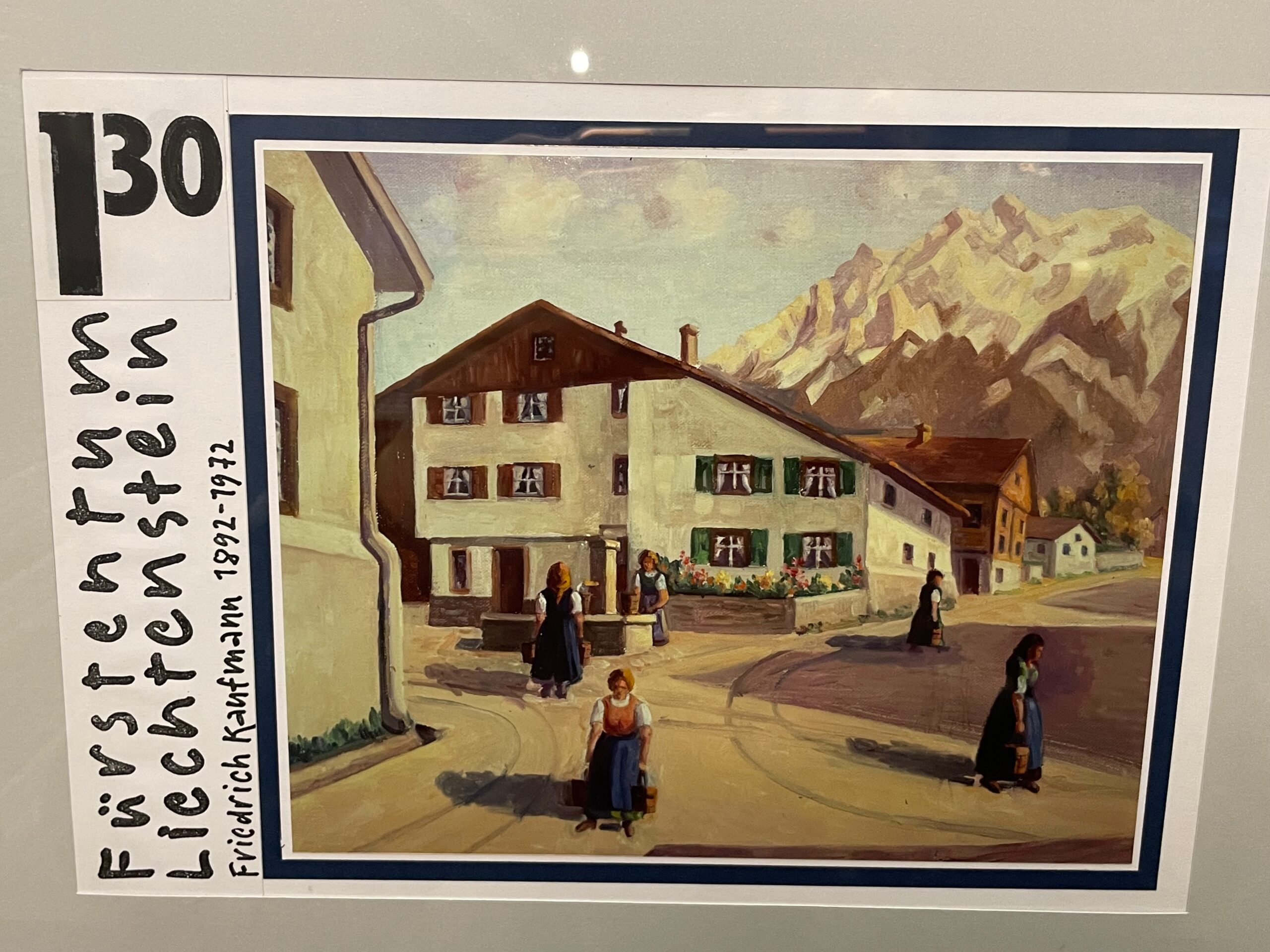 |
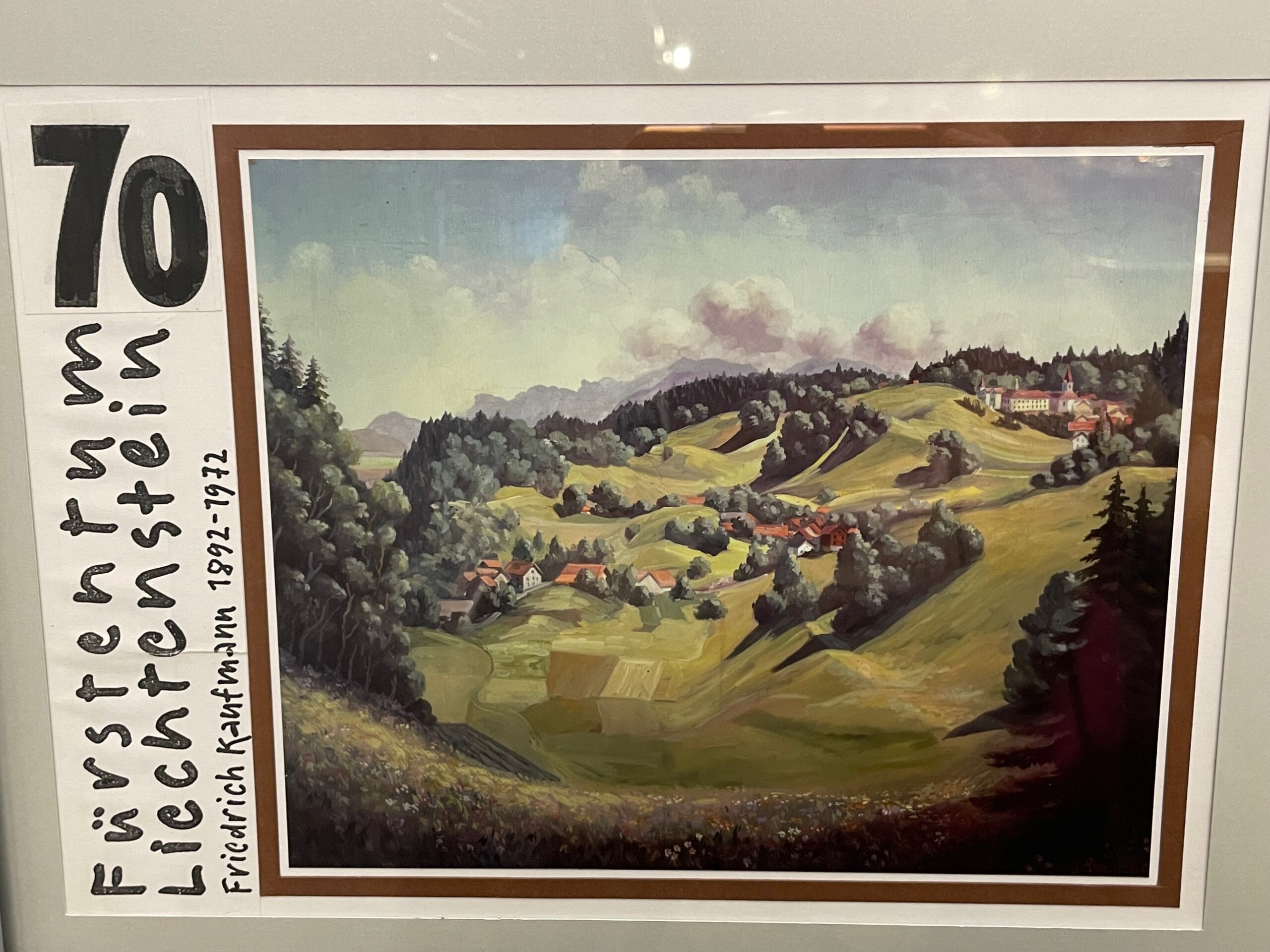 |
The museum is free to visit and at the entrance there is a souvenir shop where you can buy Liechtenstein’s stamps and postcards. If you plan to bring something very authentic from the country, stamps are definitely a good idea. The museum’s shop has in my opinion the biggest choice of stamps to sell so I suggest to make the purchase here or come back after checking in other shops (make sure to return before 5pm).
Another museum I visited is Liechtenstein National Museum since I wanted to learn more about this small country. The exhibition is divided into several sections so you can learn about Liechtenstein’s history, daily life of its citizens in the past and today, find out about customs and traditions, traditional games and sports; as well as about labor transformation through the centuries from agriculture and simple tools manufacturing to highly advanced industries which made Liechtenstein prosperous.
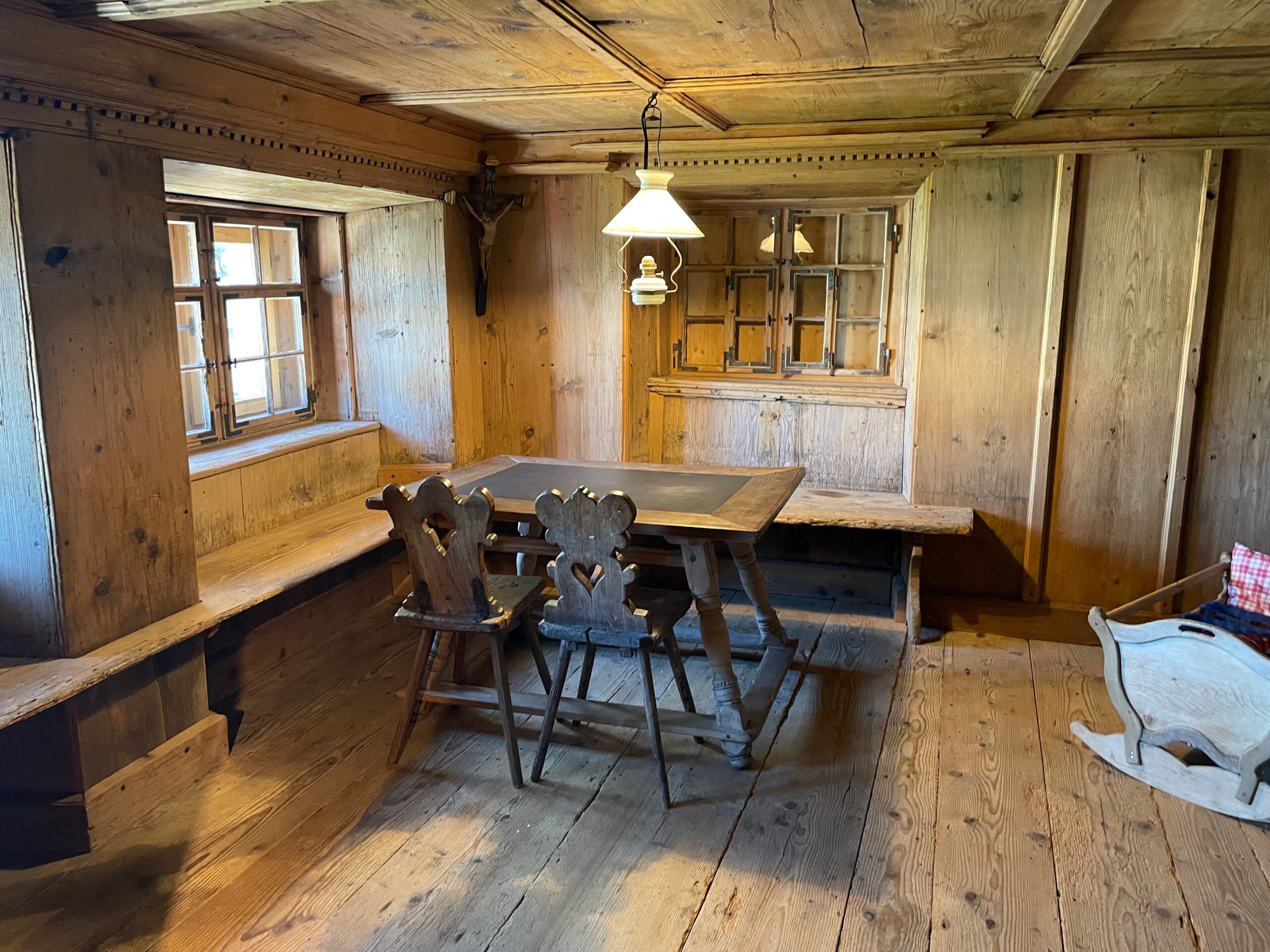 |
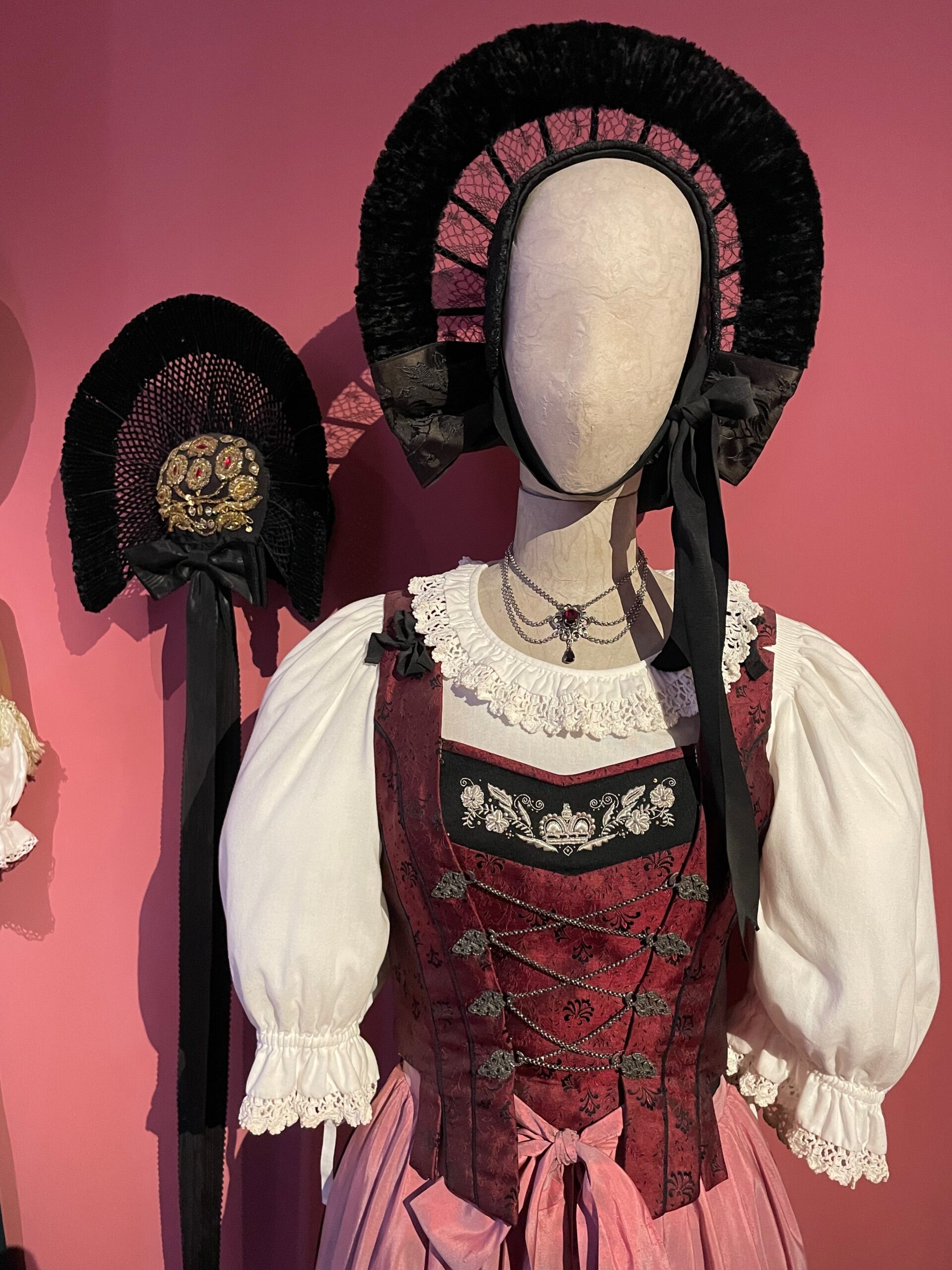 |
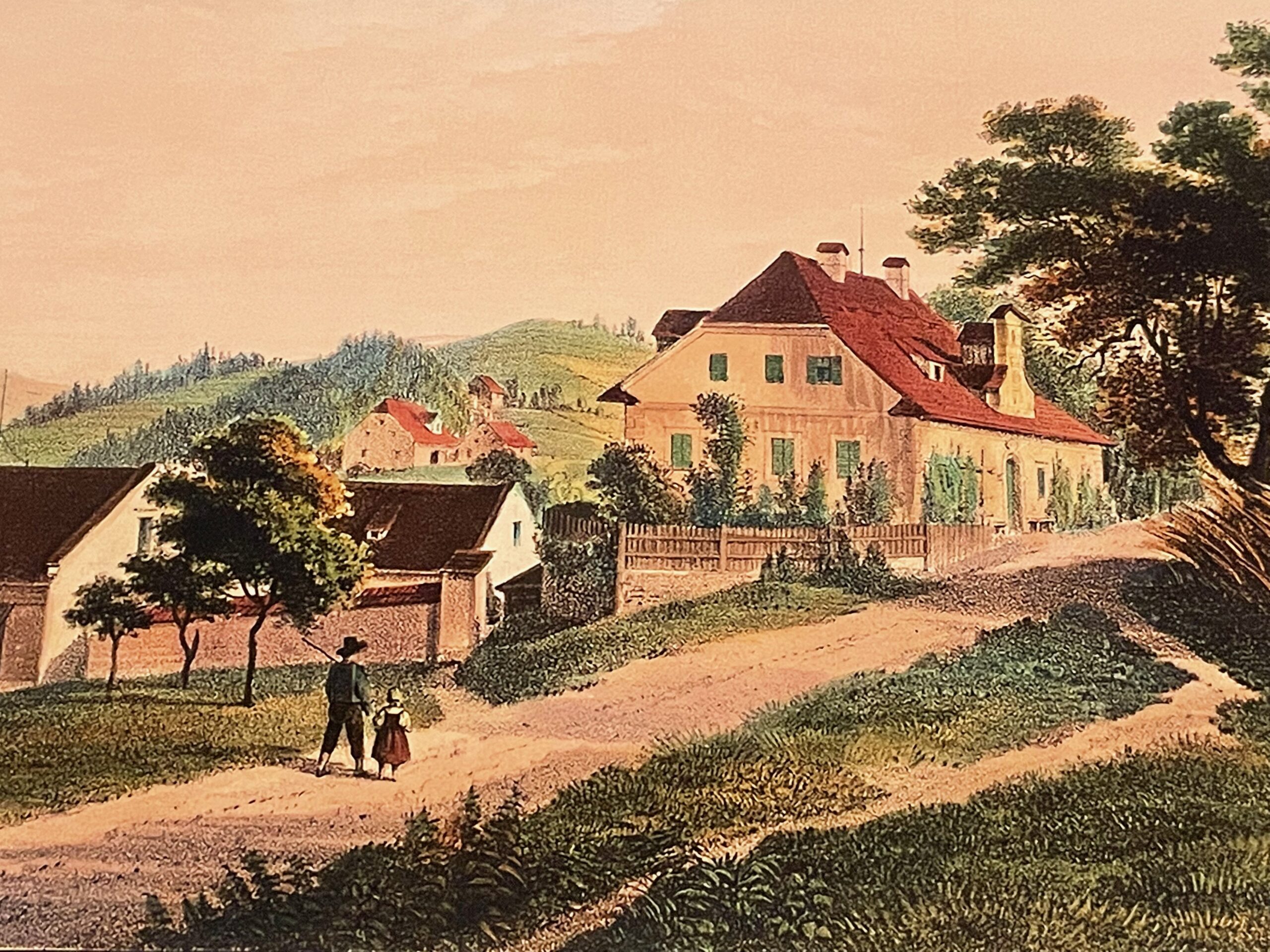 |
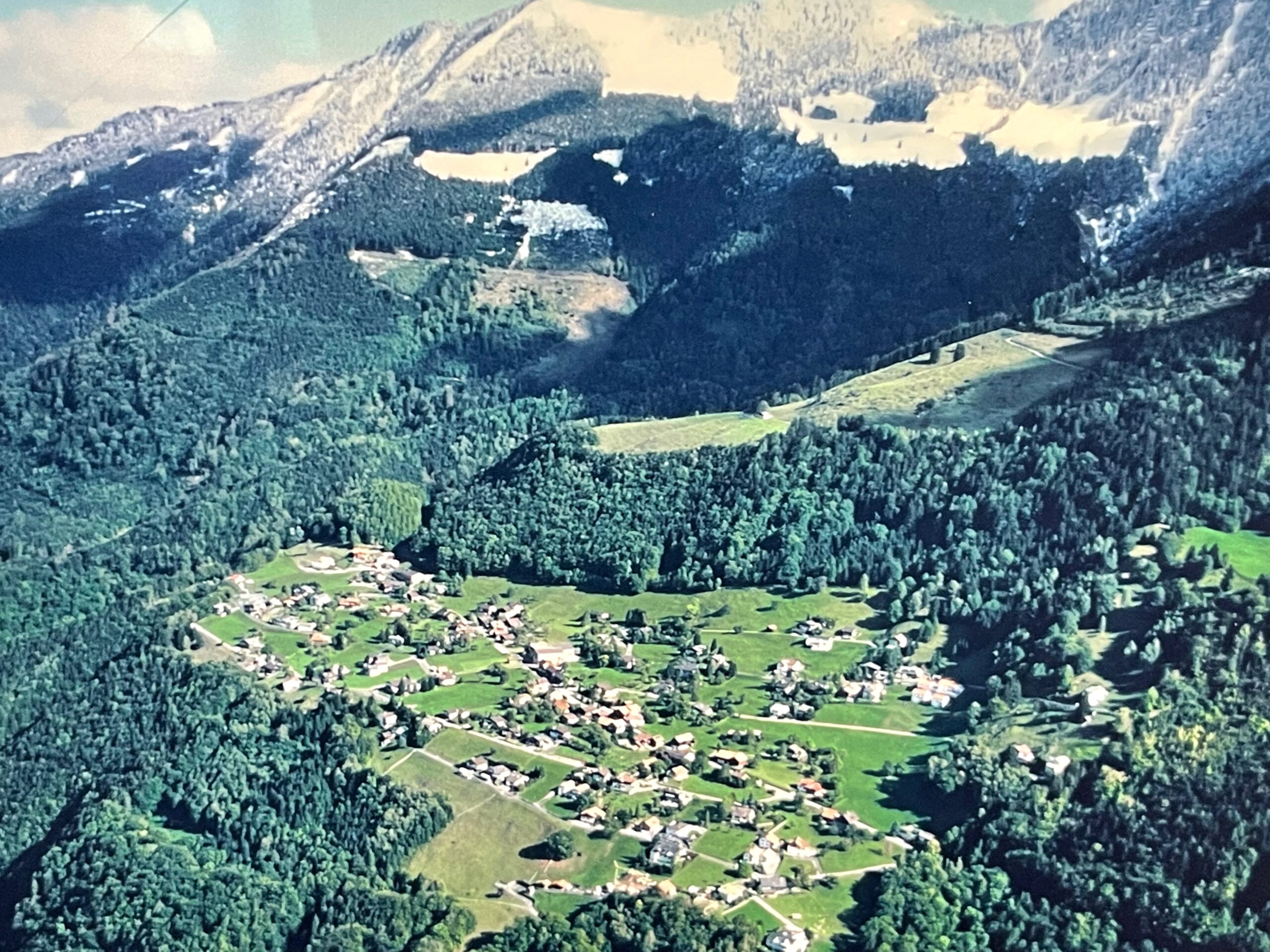 |
In the price of the ticket you get an audio guide so you can have a really informed tour, the explanations are concise and with interesting anecdotes. Personally, I found the visit very enjoyable. It took me around 2 hours to complete my tour and I still skipped some extra commentaries.
At the entrance there is also a very nice souvenir shop, I found museum shops more interesting and offering better prices than the tourist office boutique and the quality of products was higher than in some tourist shops that I found on Städtle street.
Wherever you decide to get your souvenirs I recommend purchasing them in Vaduz since it is quite difficult to find tourist shops in other cities. I’m sure it’s possible to get some local food products in other places around Liechtenstein but I think you really need to do research in advance and then go to the exact shop/farm/vineyard.
After museums I recommend grabbing some lunch on Städtle street and try local beer and wine. I had impression that early afternoon is the liveliest time in Liechtenstein when many locals go for a small snack or have a coffee especially on sunny day, they will sit outside and enjoy a short break. This is a nice opportunity to observe the residents and experienced relaxed atmosphere in the center.
After lunch I had a walk along the Städtle street and visited Cathedral of St. Florin built in neo-Gothic style, crossed Governmental Building dating from 1905 and which is a seat of the government of Principality of Liechtenstein, and at the other end of the street there is a Town Hall with very beautiful southern façade decorated with ornaments around the windows and the balcony fresco by Johannes Troyer.
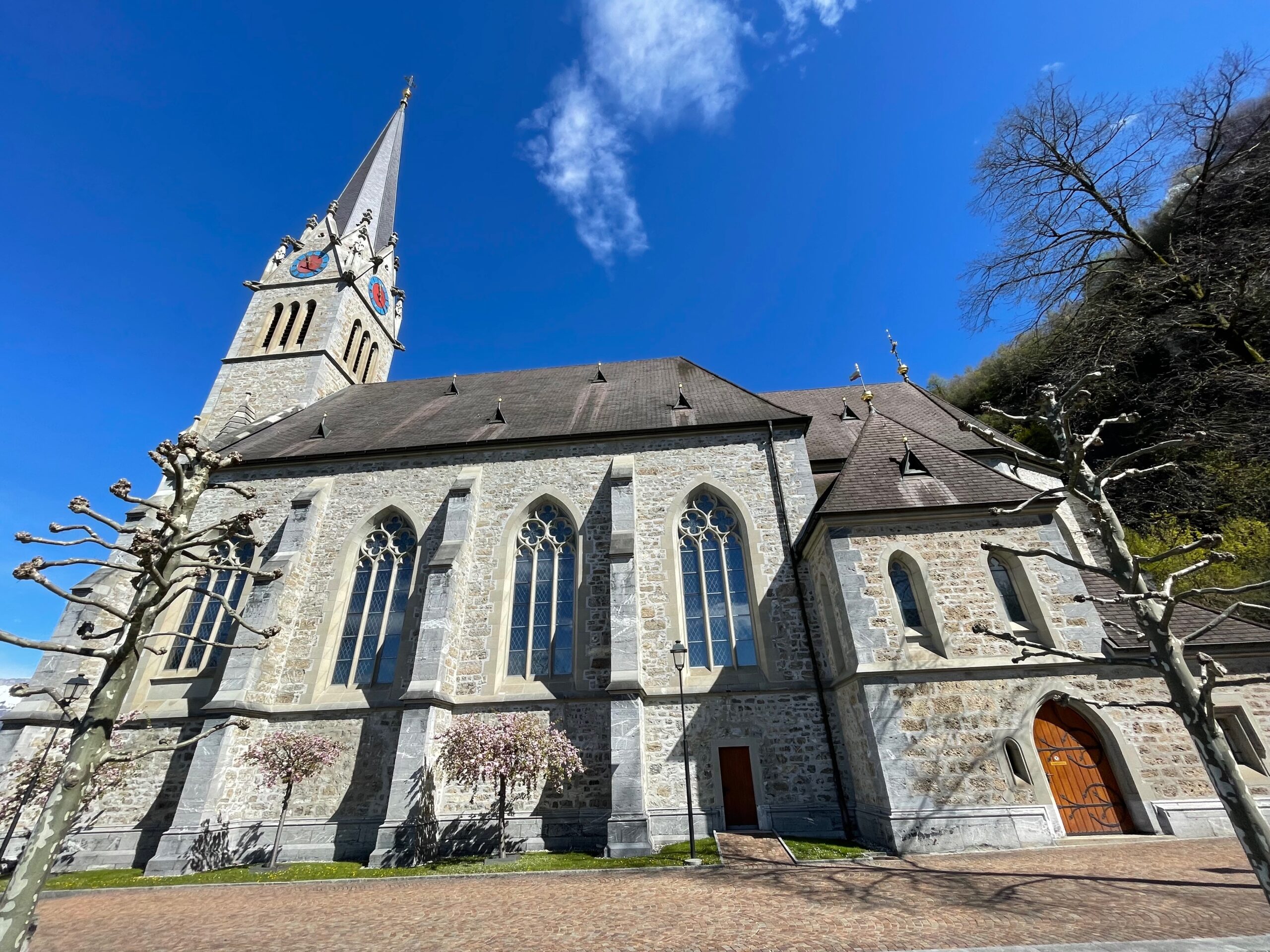 |
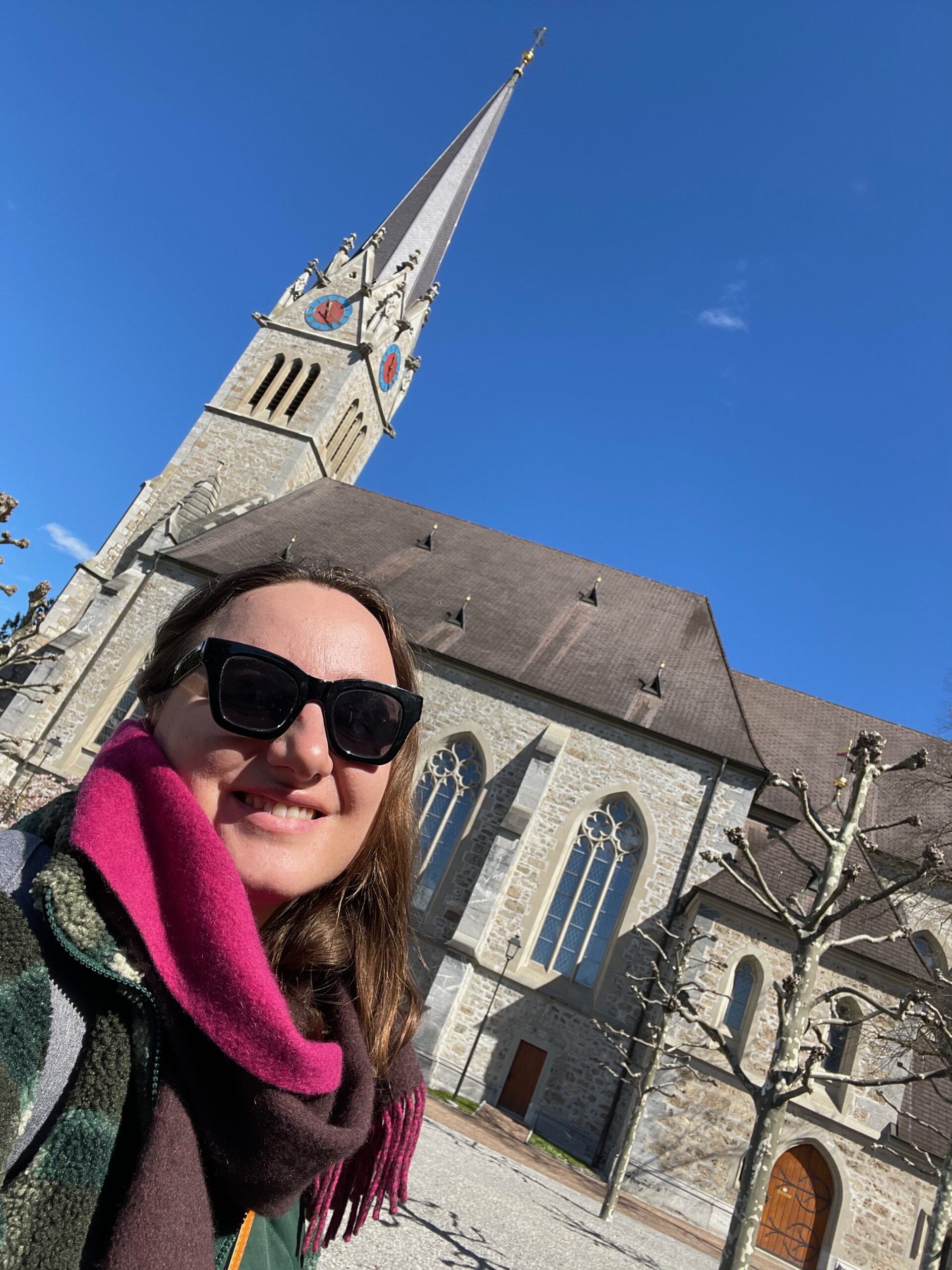 |
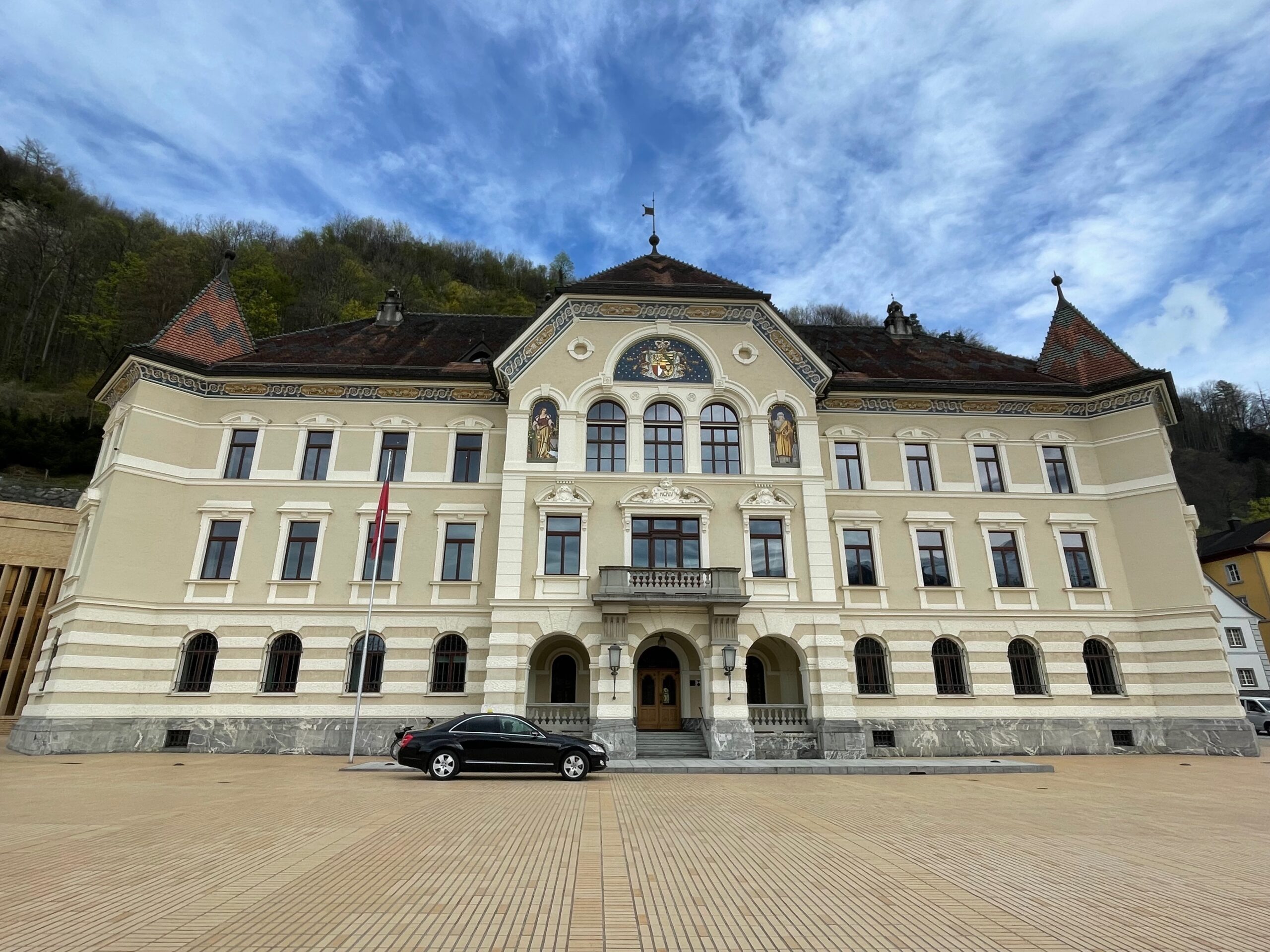 |
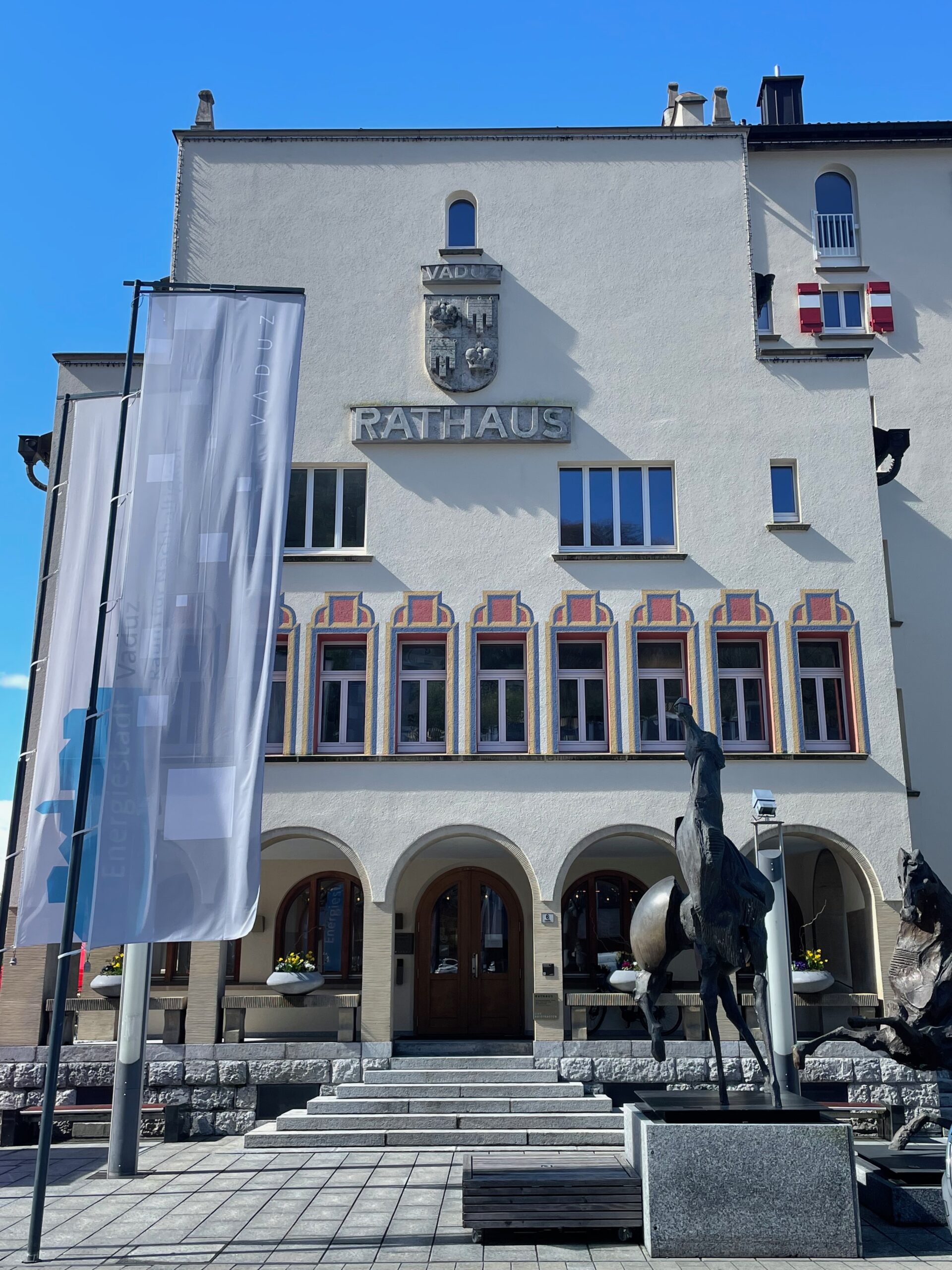 |
A short walk from Städtle street will get you to Princely Cellars which are court wine cellars of the Reigning Prince of Liechtenstein. During your hike to the Vaduz Castle when overlooking the city you can observe few small vineyards and you will see even more of them when going to Balzers. In fact Liechtenstein has their own wine production which is of course small but you can still purchase a bottle of white wine like Chardonnay, Riesling x Sylvaner, and Gewürztraminer, while red wines most produced are Blauburgunder, Zweigelt, and Blaufränkisc. The biggest selection I found was indeed in Princely Cellars shop, you can also go there for tasting or to their restaurant.
The vineyard itself is open to walk through (on designated paths only) which is a very nice experience with beautiful views of Alps in the background.
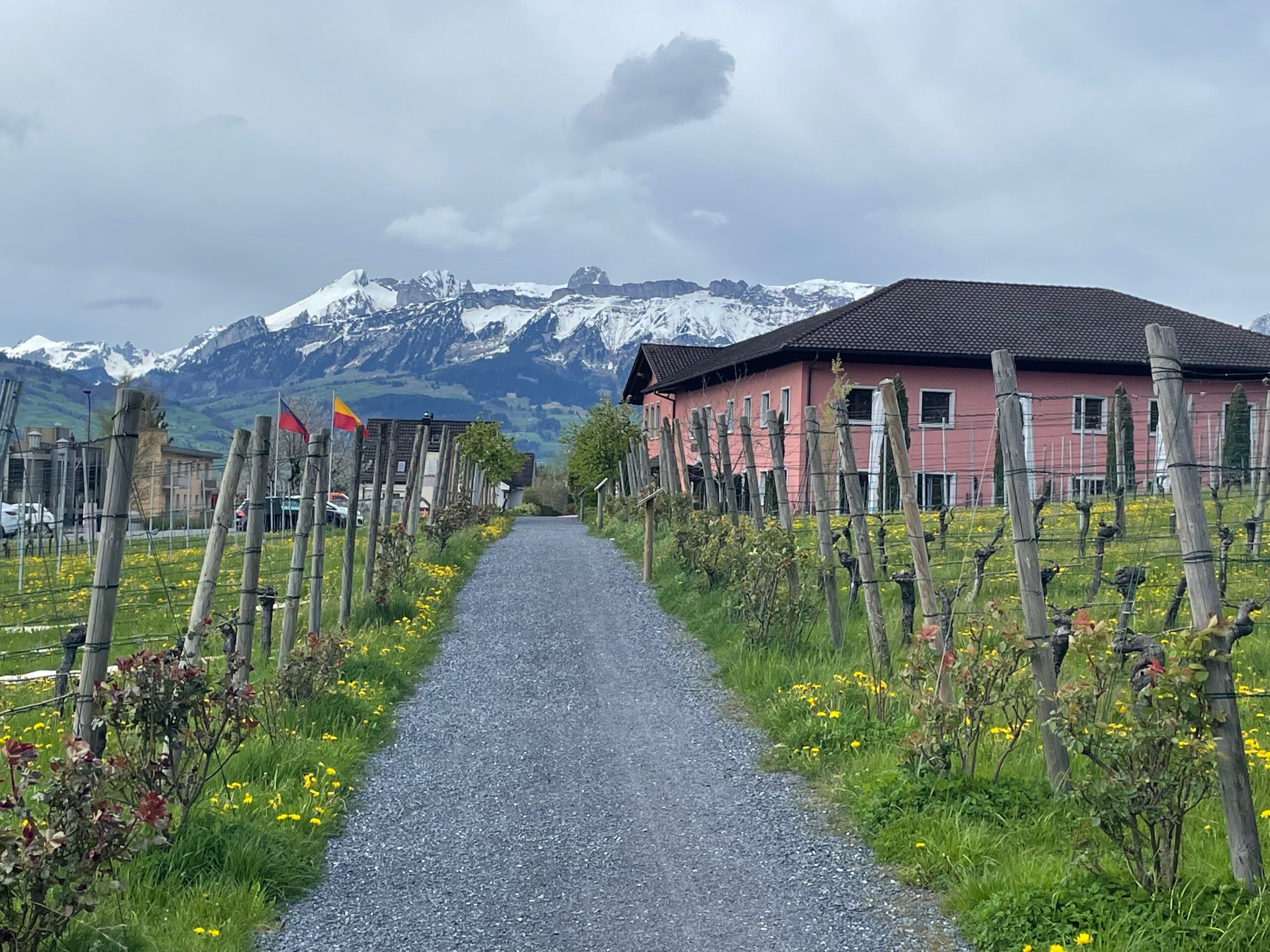 |
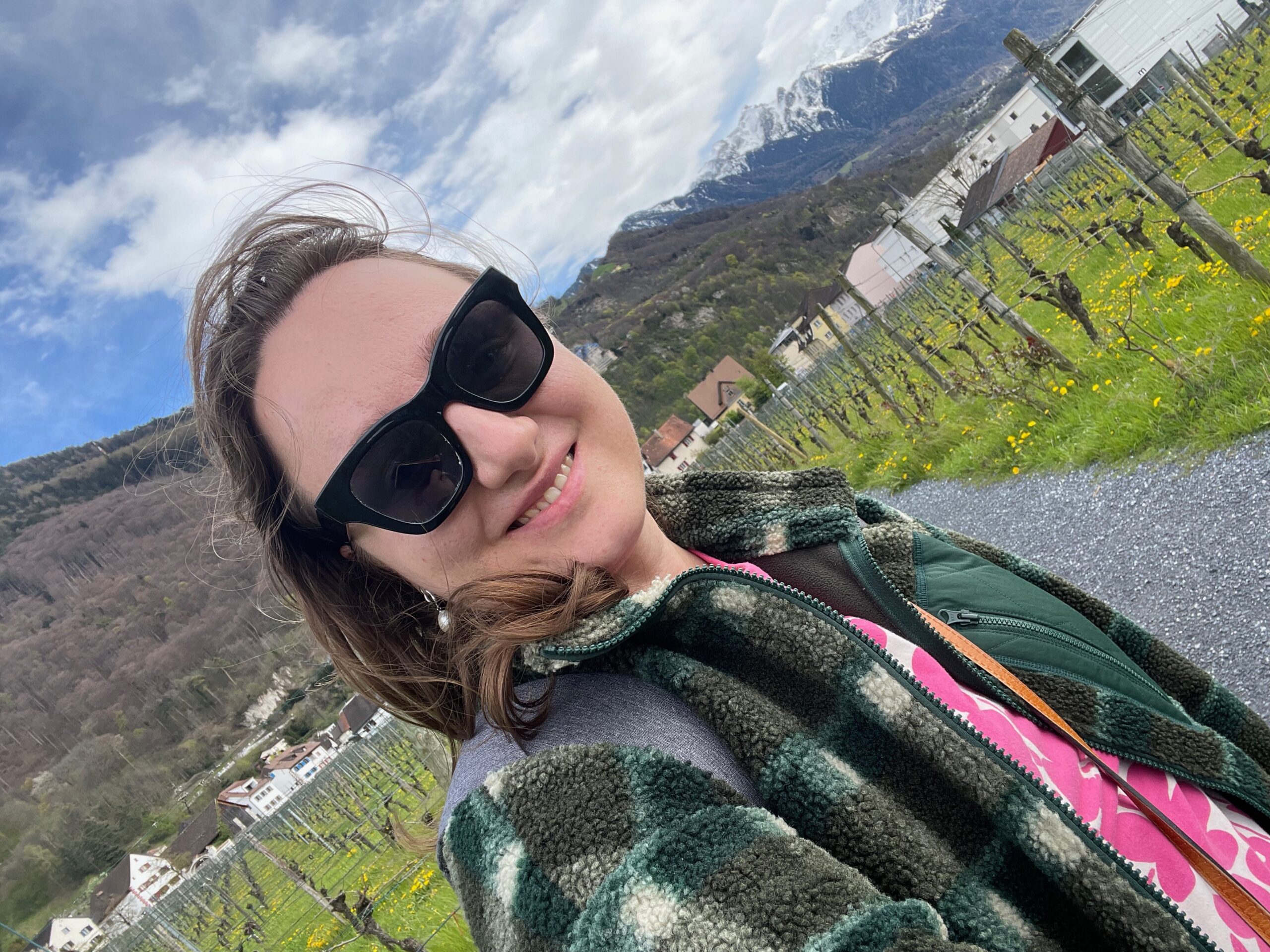 |
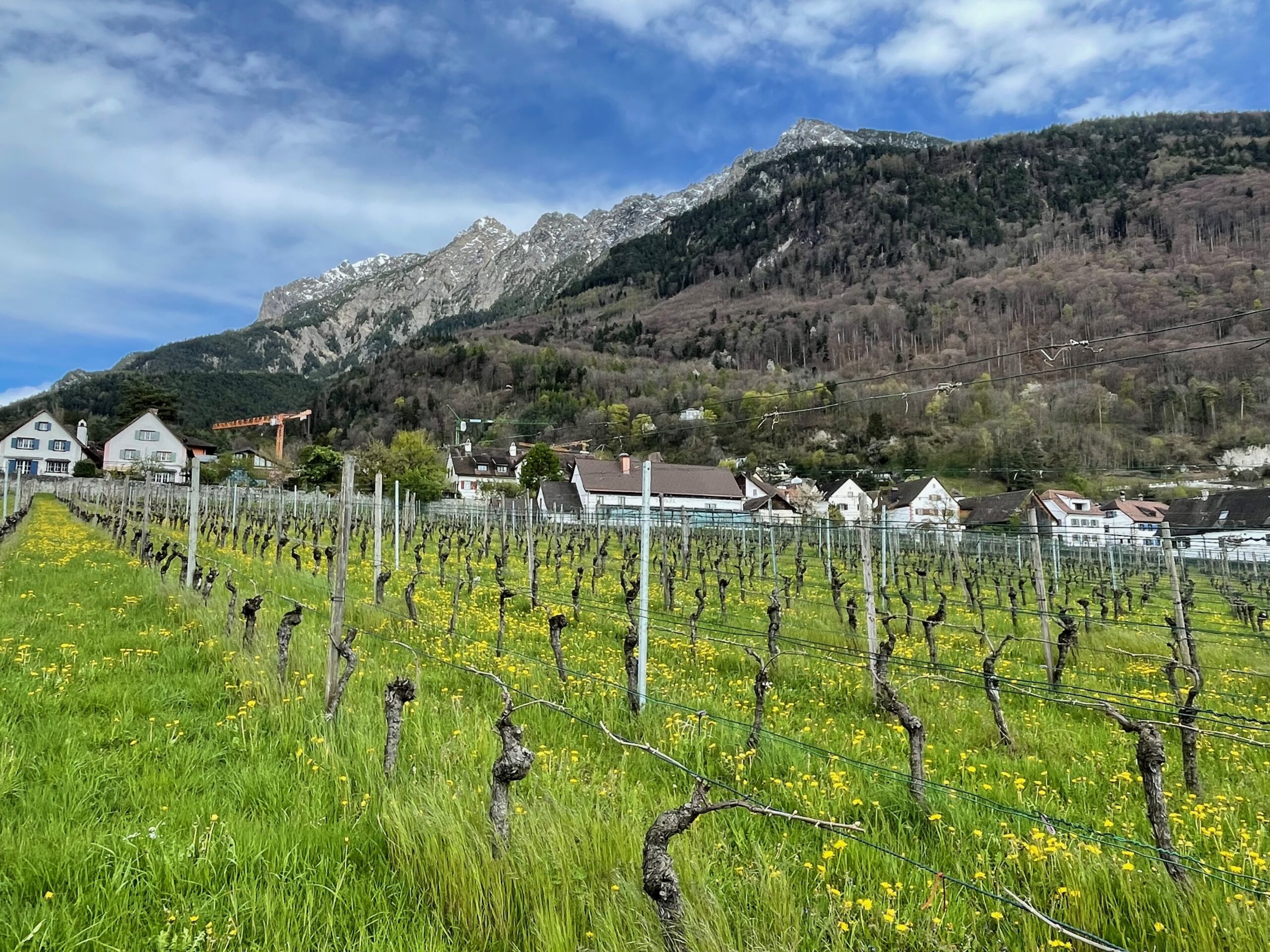 |
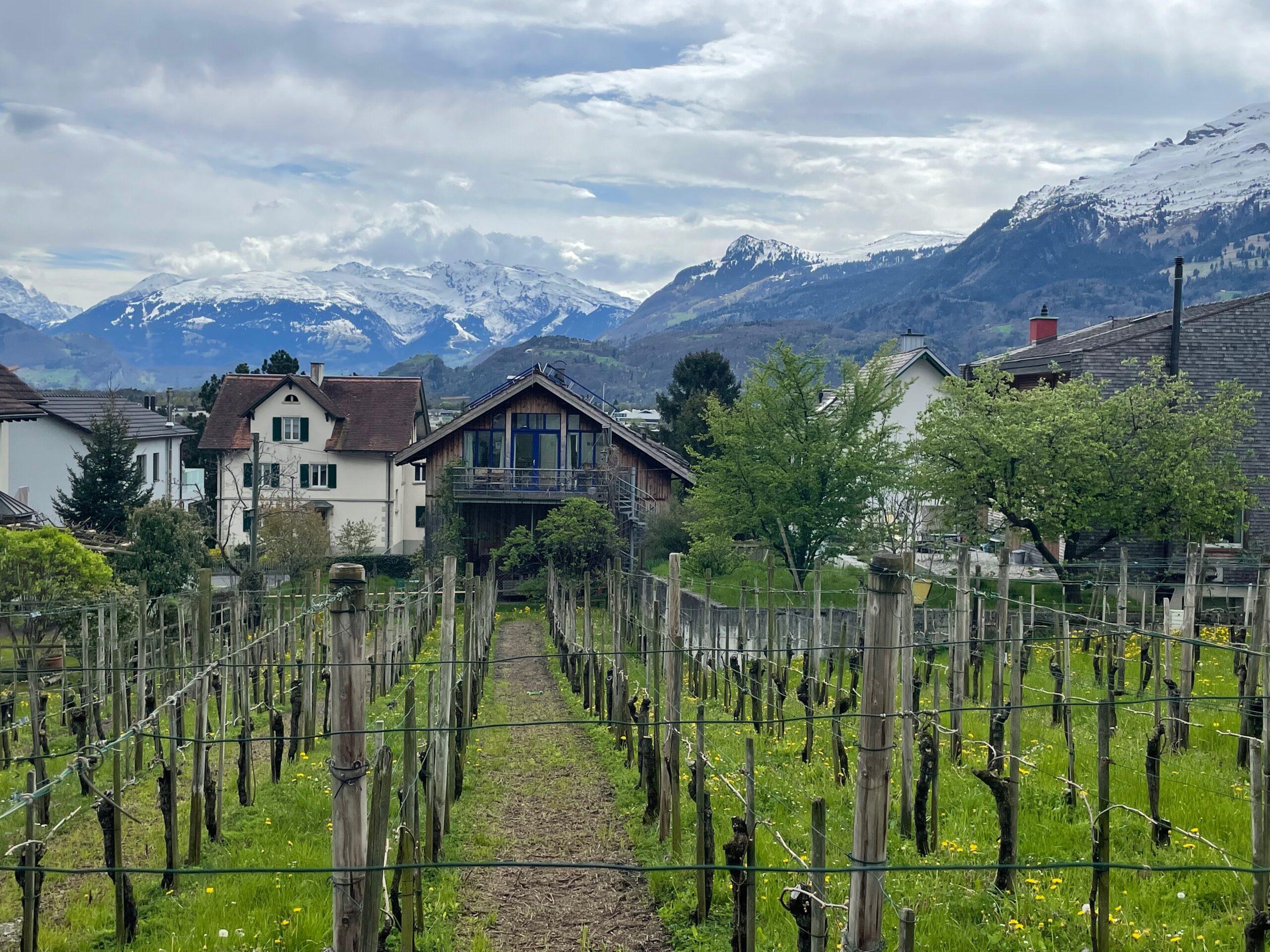 |
I found much more limited selection of wines in the supermarkets, however if you search for Liechtenstein beers, local shops have nice selection and better prices than tourist boutiques.
If you search for authentic nice souvenirs typical for Liechtenstein I really think those are stamps, wine and local beer. I saw many residents sipping their beer in the afternoon and I brought my friends few bottles for little tasting. We all liked its fresh and smooth flavour.
When getting out of the vineyard you can continue your walk through Mittledorf which is a historical village area of Vaduz with charming narrow streets and traditional old houses, you can also enjoy nice views of Vaduz Castle. When exploring Mittledorf, don’t skip the Red House which was built in 1338 and is a historical landmark. I find it looks particularly beautiful from the side of the vineyards.
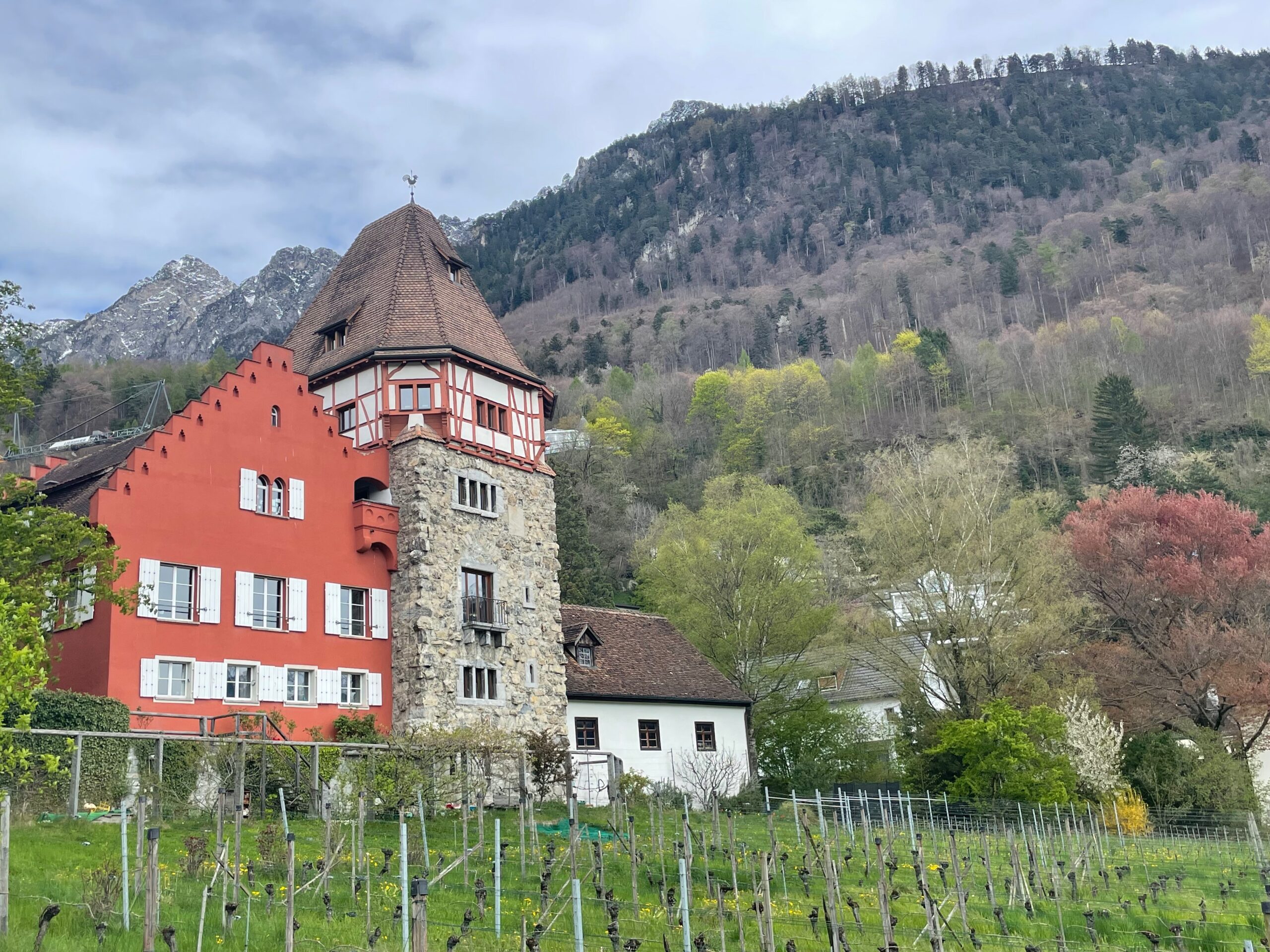 |
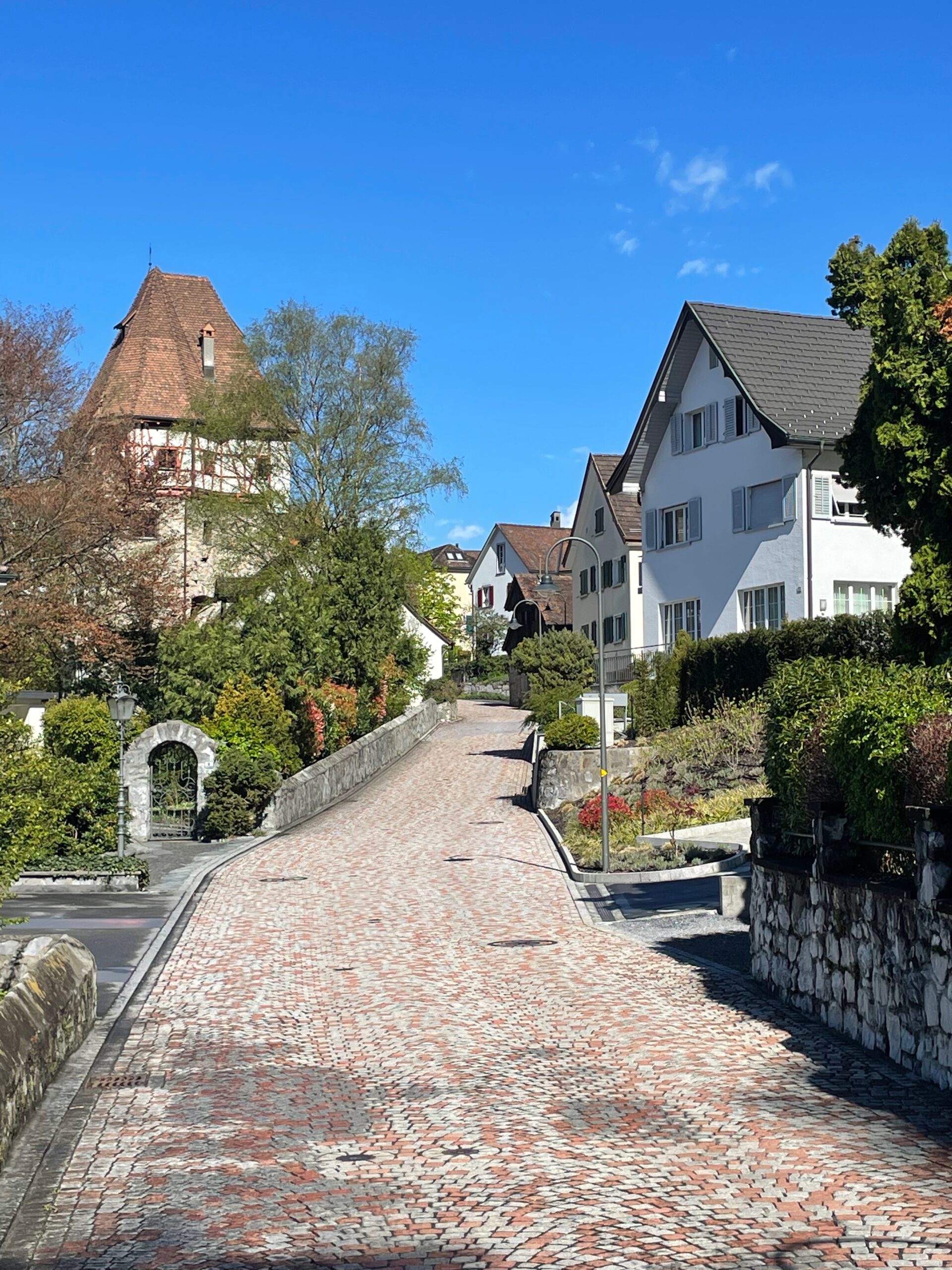 |
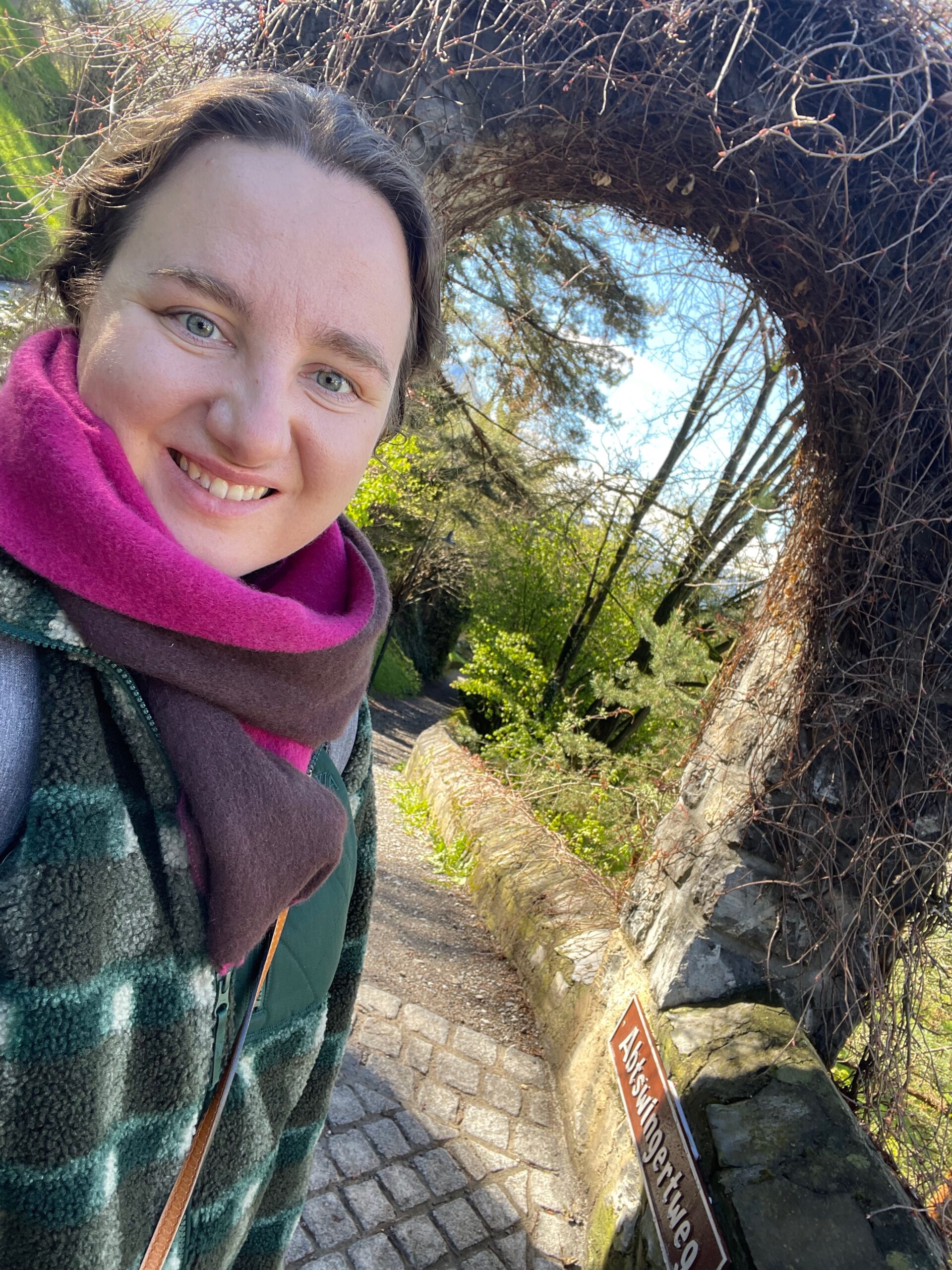 |
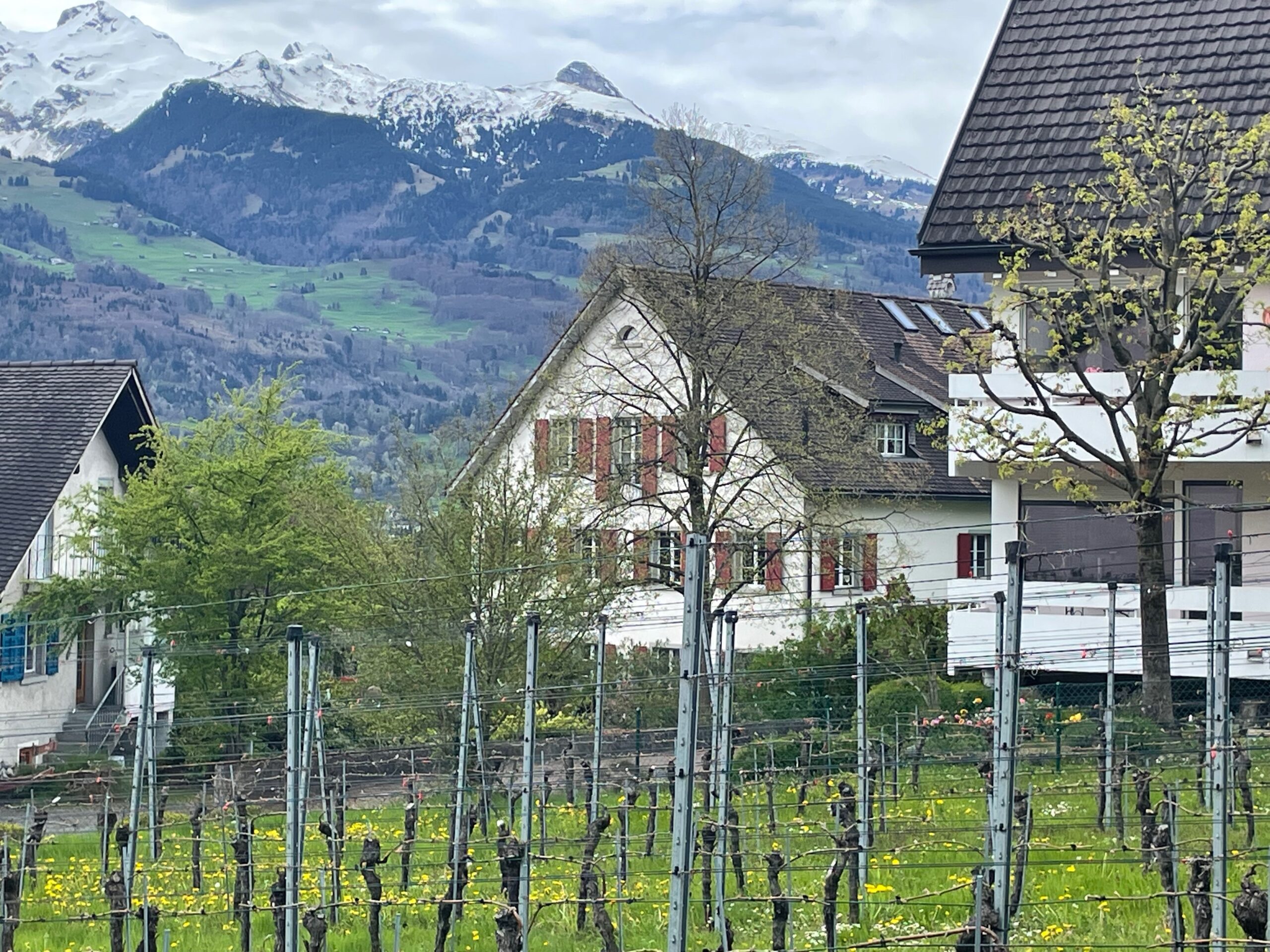 |
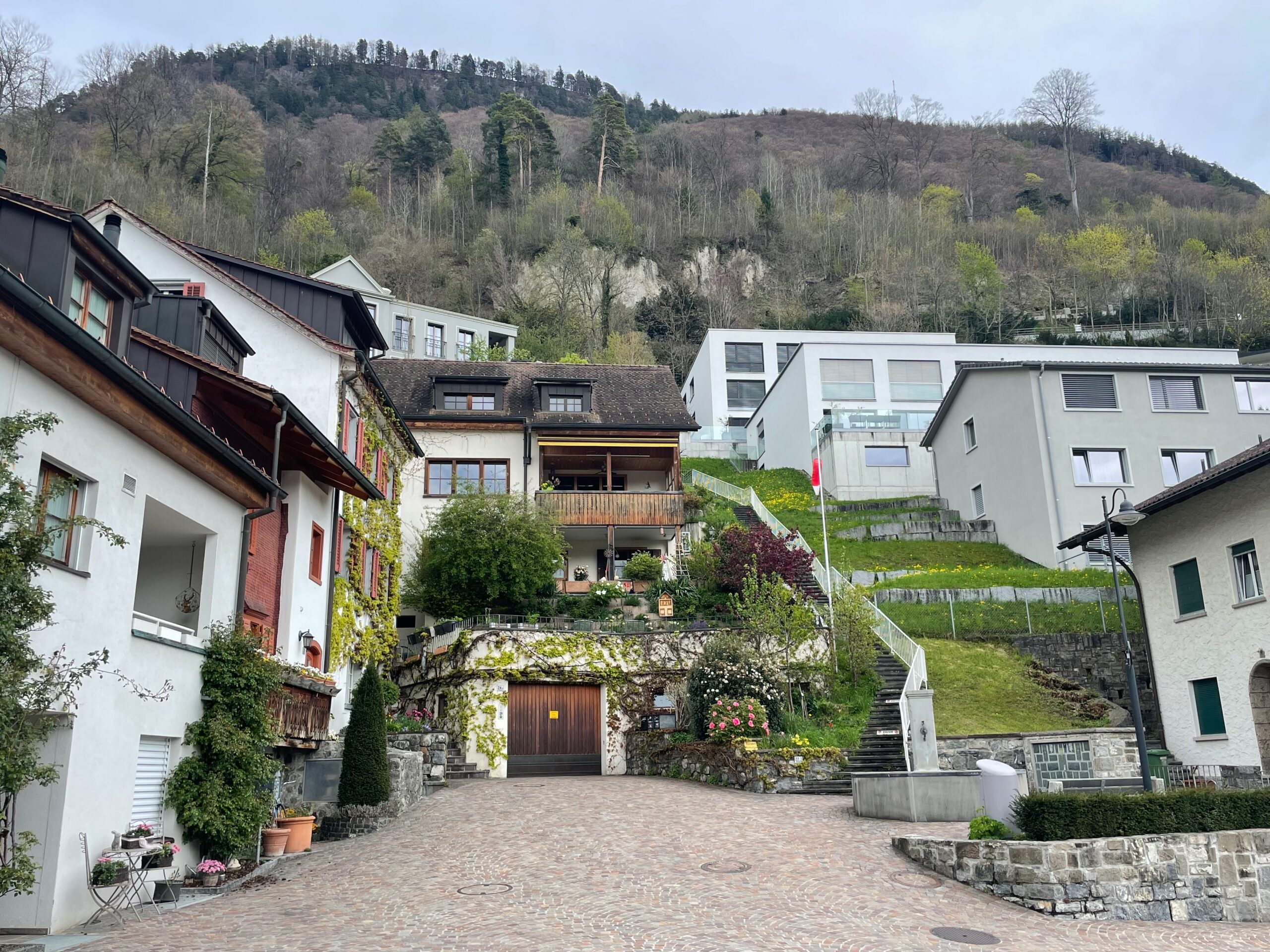 |
As you continue through Mittledorf, in around 5 minutes you should be back to Städtle street. If you want to see other places in Liechtenstein I suggest going to Vaduz post bus stop and browse the online website to check the schedule to another destination.
I have finished my explorations of Vaduz in late afternoon and decided to go to Balzers which is conveniently located between Vaduz and Sargans. I wanted to have a short hike to Gutenberg Castle which is one of the five castles of the principality and only one of 2 which survived until now. Contrary to Vaduz Castle, this one is open for visitors and hosts a museum. I really like the location of the building, the castle is situated on the rock covered by vineyards which makes the short hike very picturesque. As you go up you can admire the surrounding mountains. During my visit the museum was closed and I couldn’t see the interiors, it was only possible to enter the courtyard but I was not very upset since I really enjoyed the views.
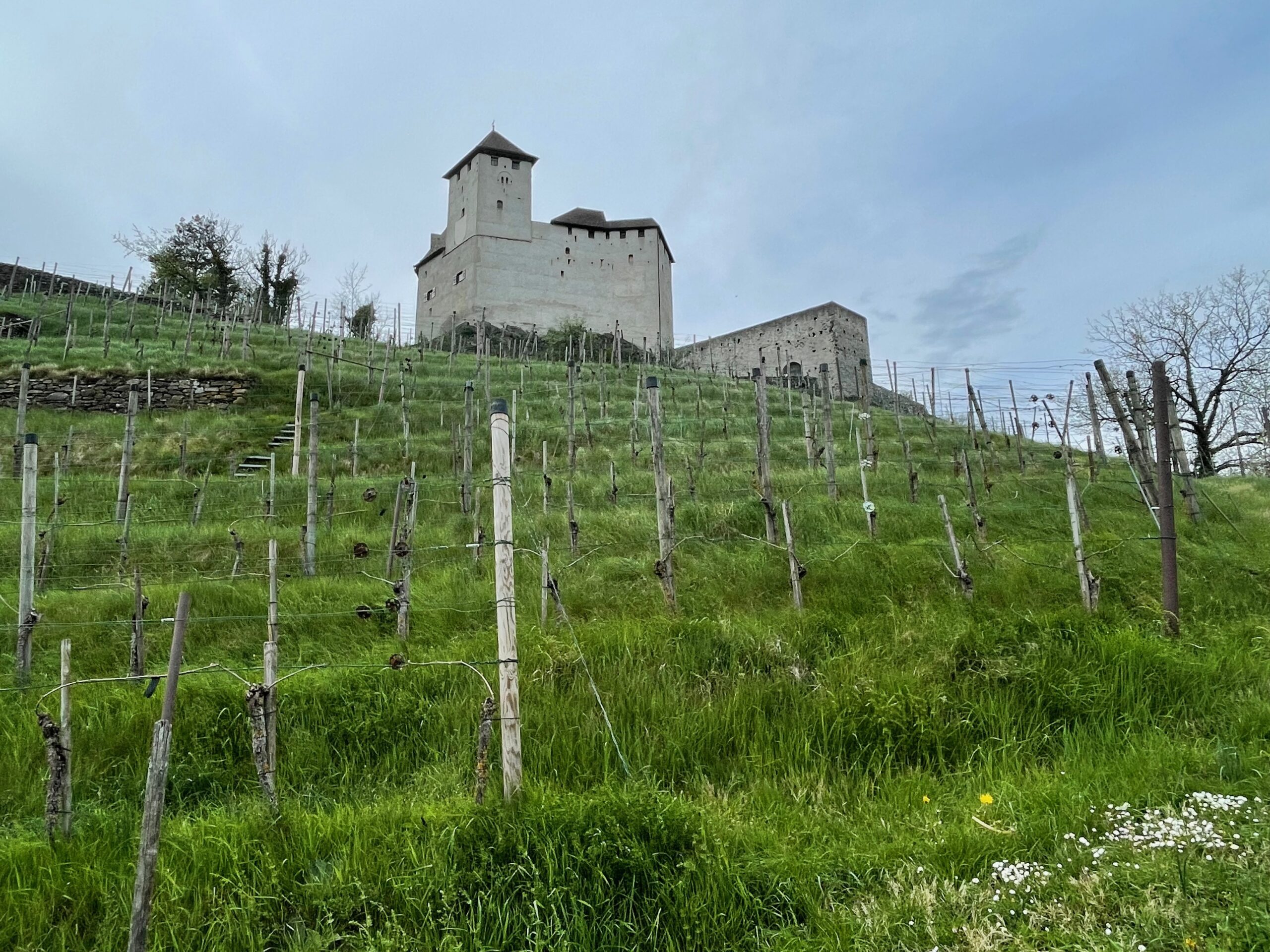 |
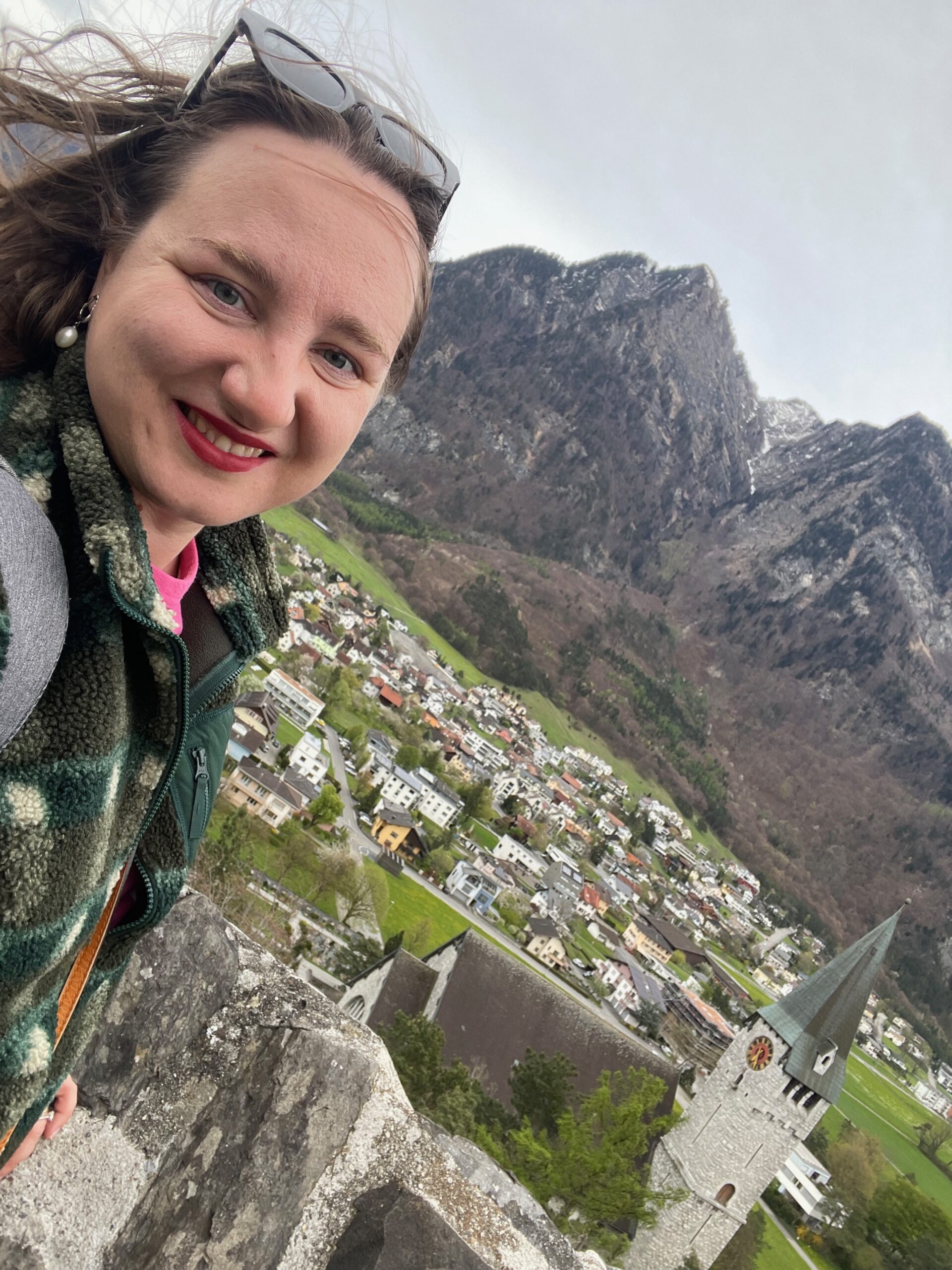 |
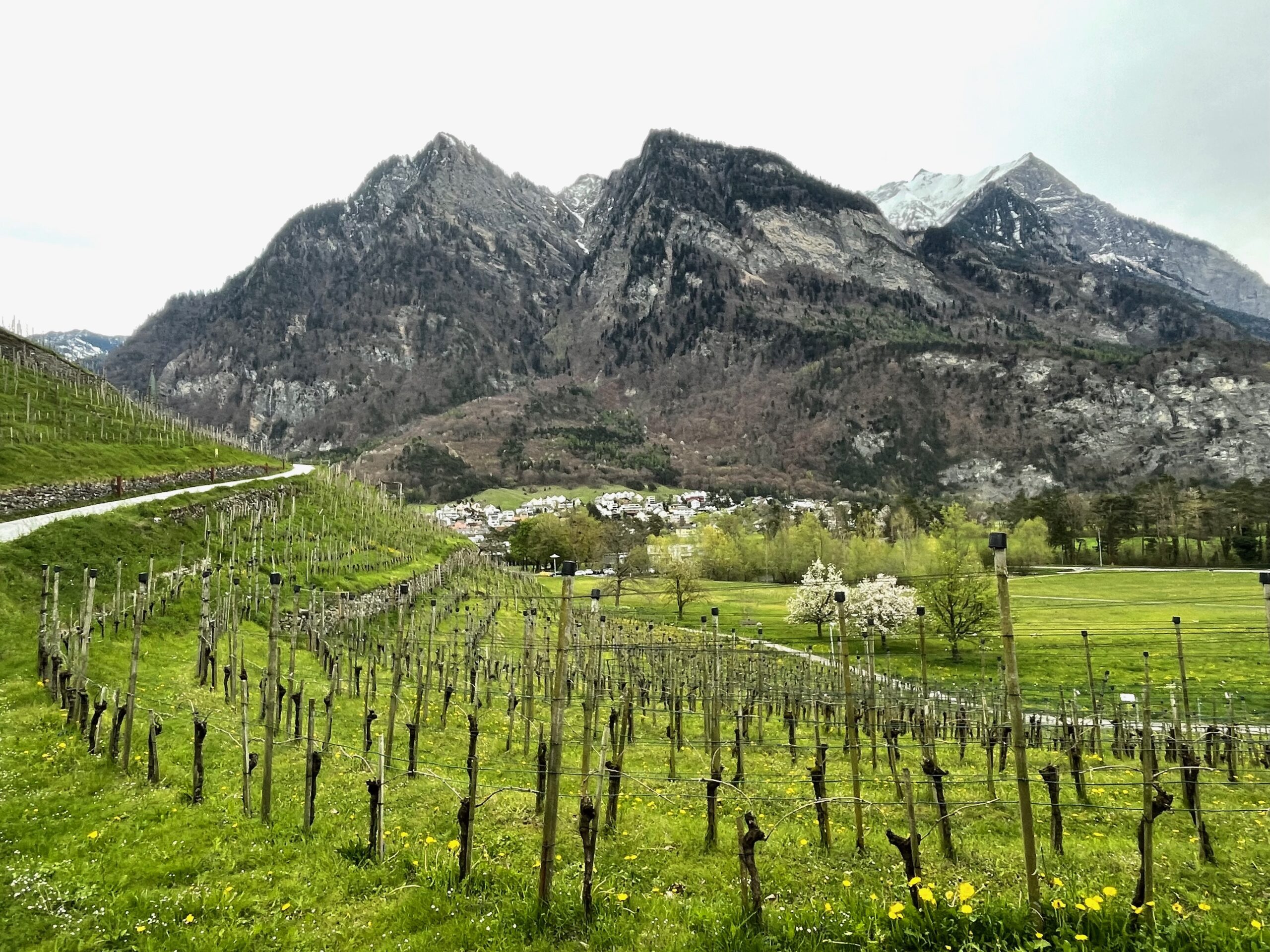 |
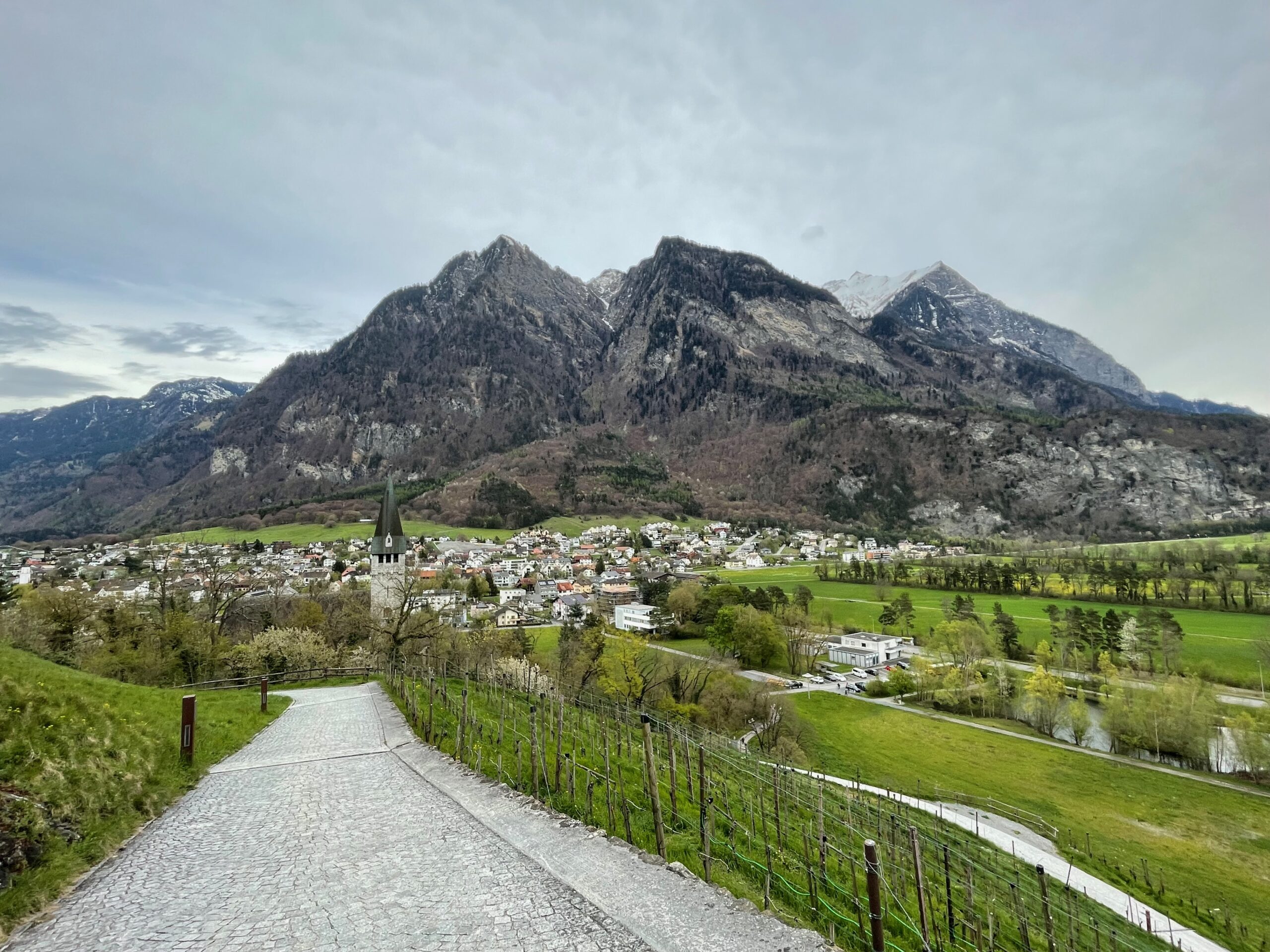 |
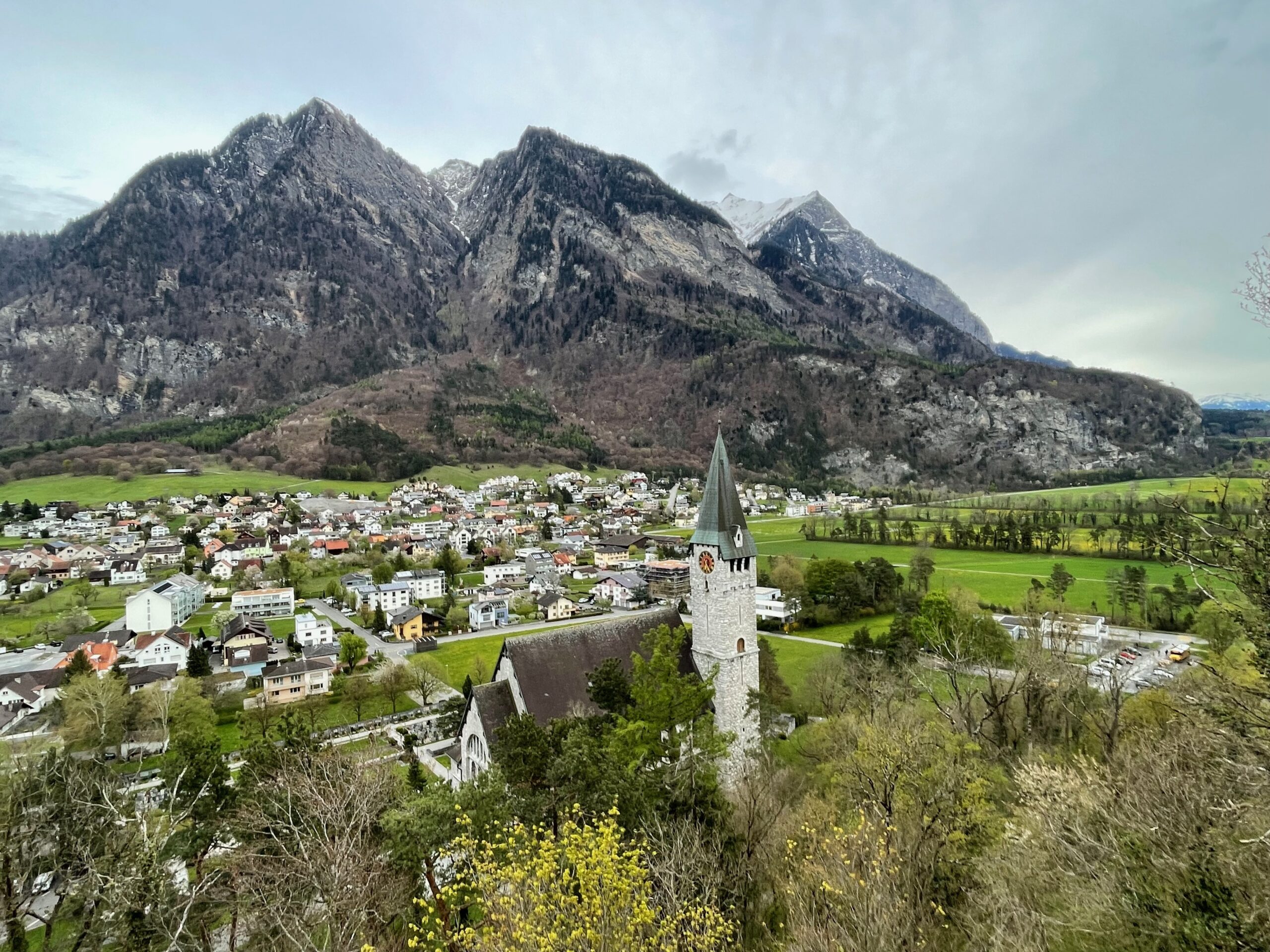 |
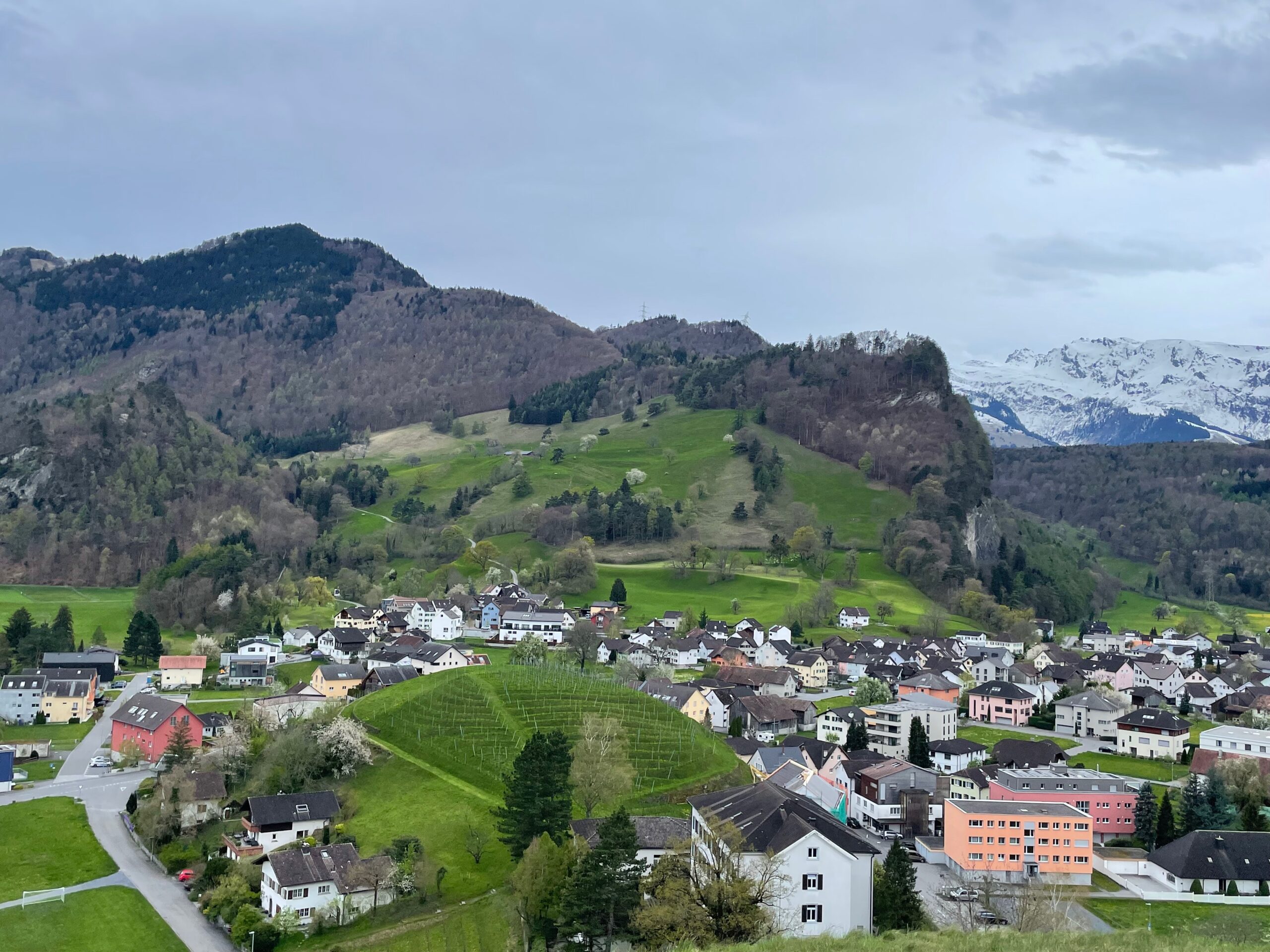 |
Balzers is much smaller than Vaduz and you can see locals having their walks with dogs or relaxing with children, this was a very nice place to observe Liechtenstein’s families and how much the residents enjoy spending time outdoors in the nature.
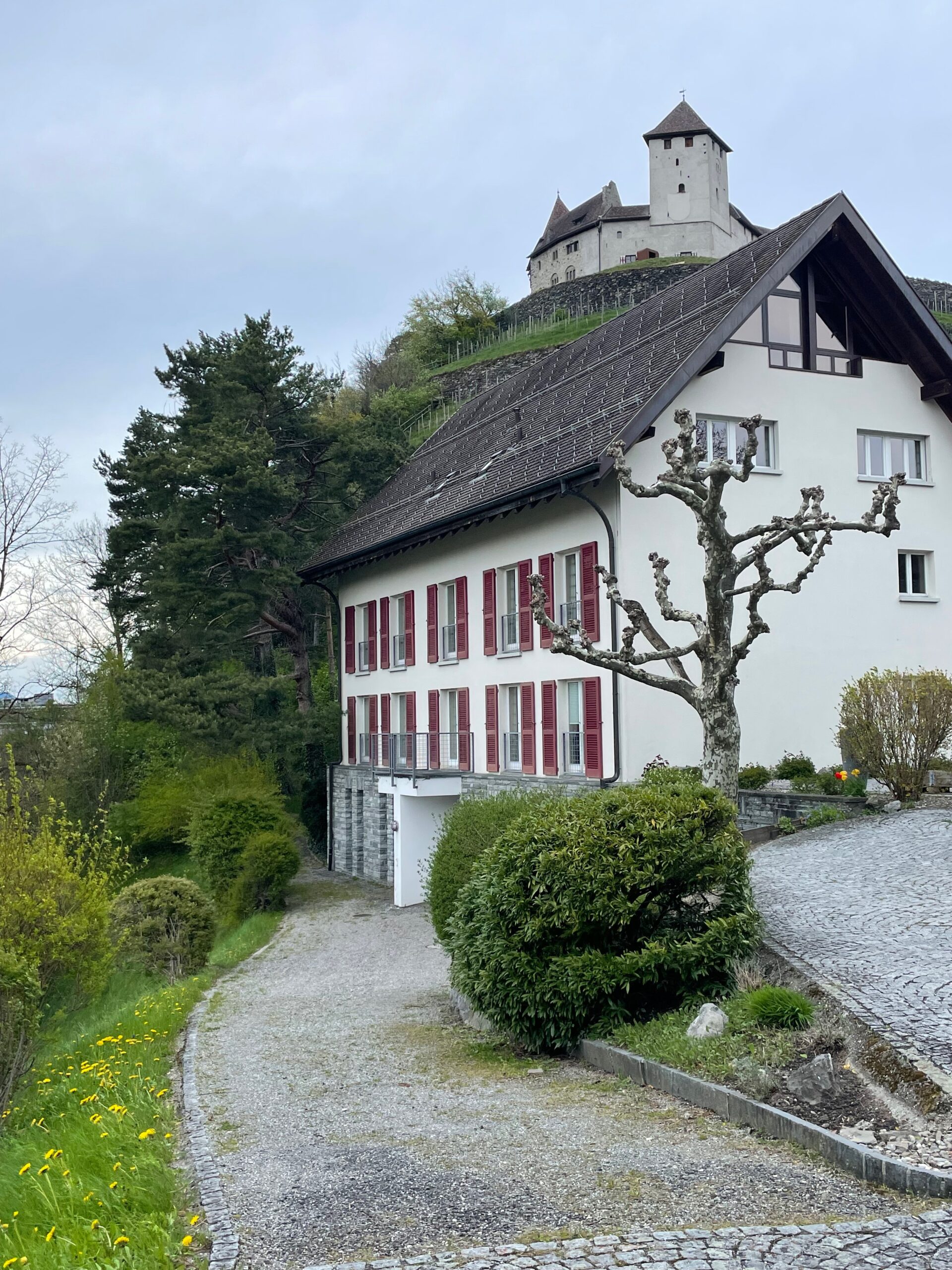 |
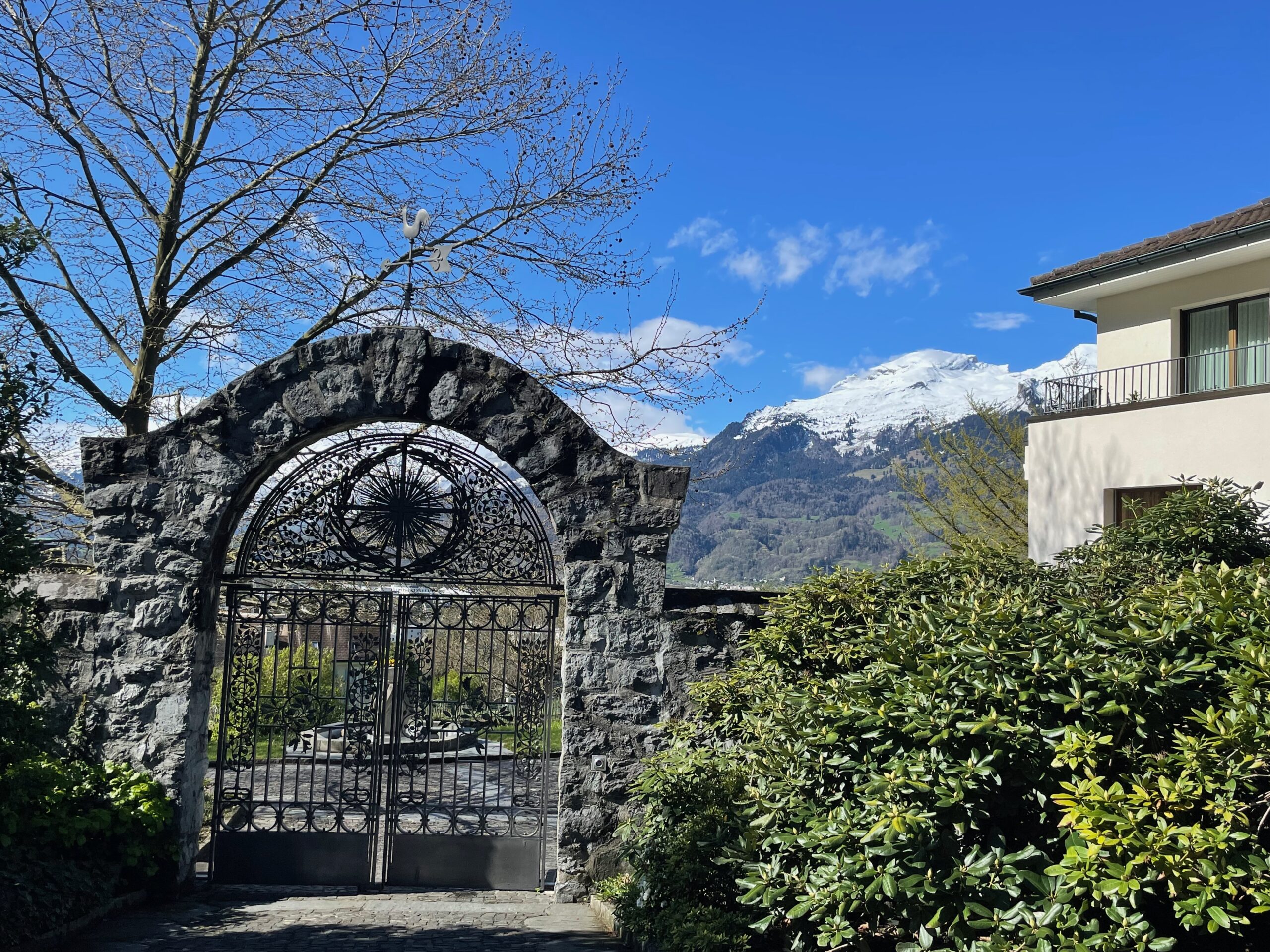 |
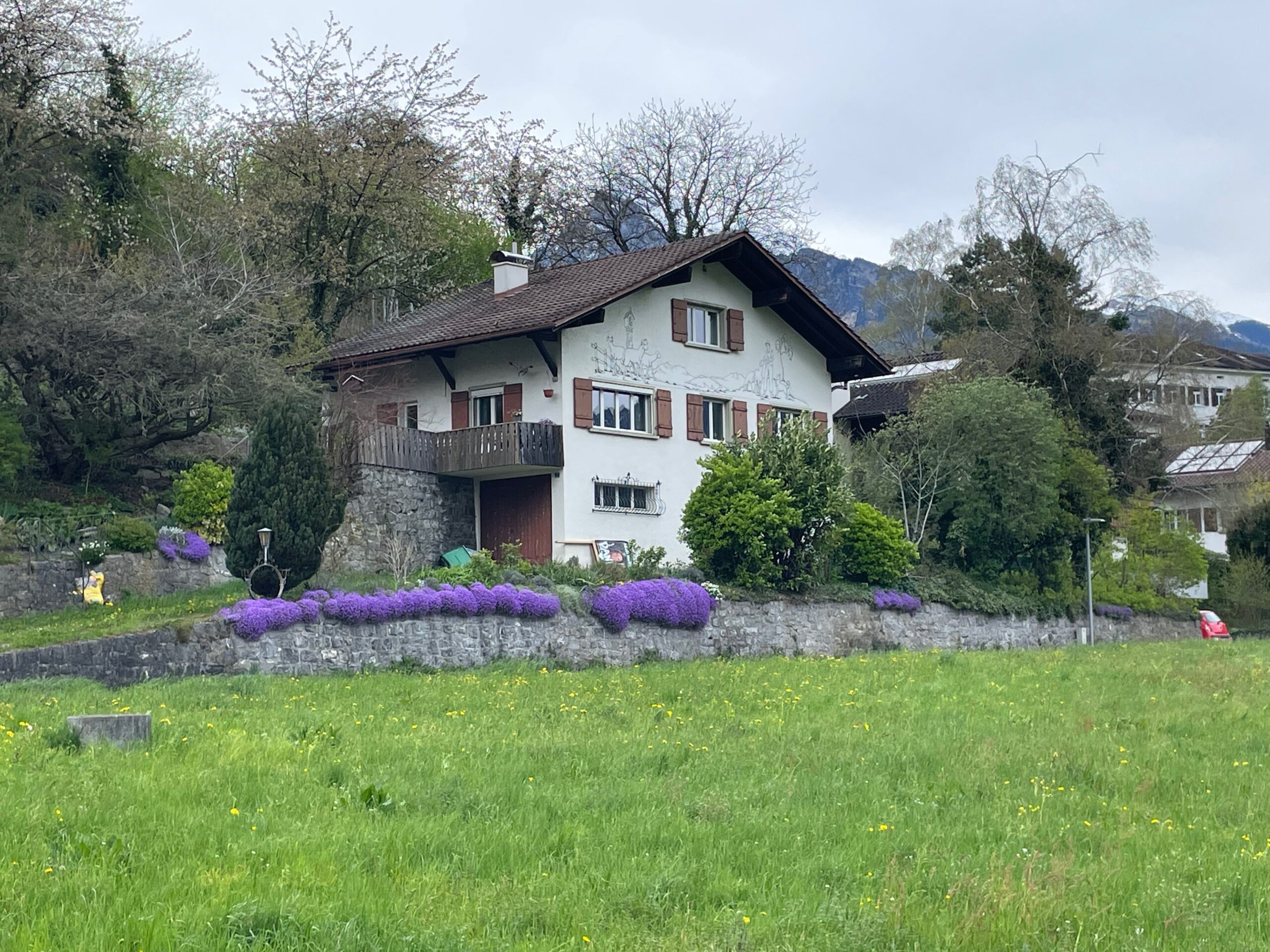 |
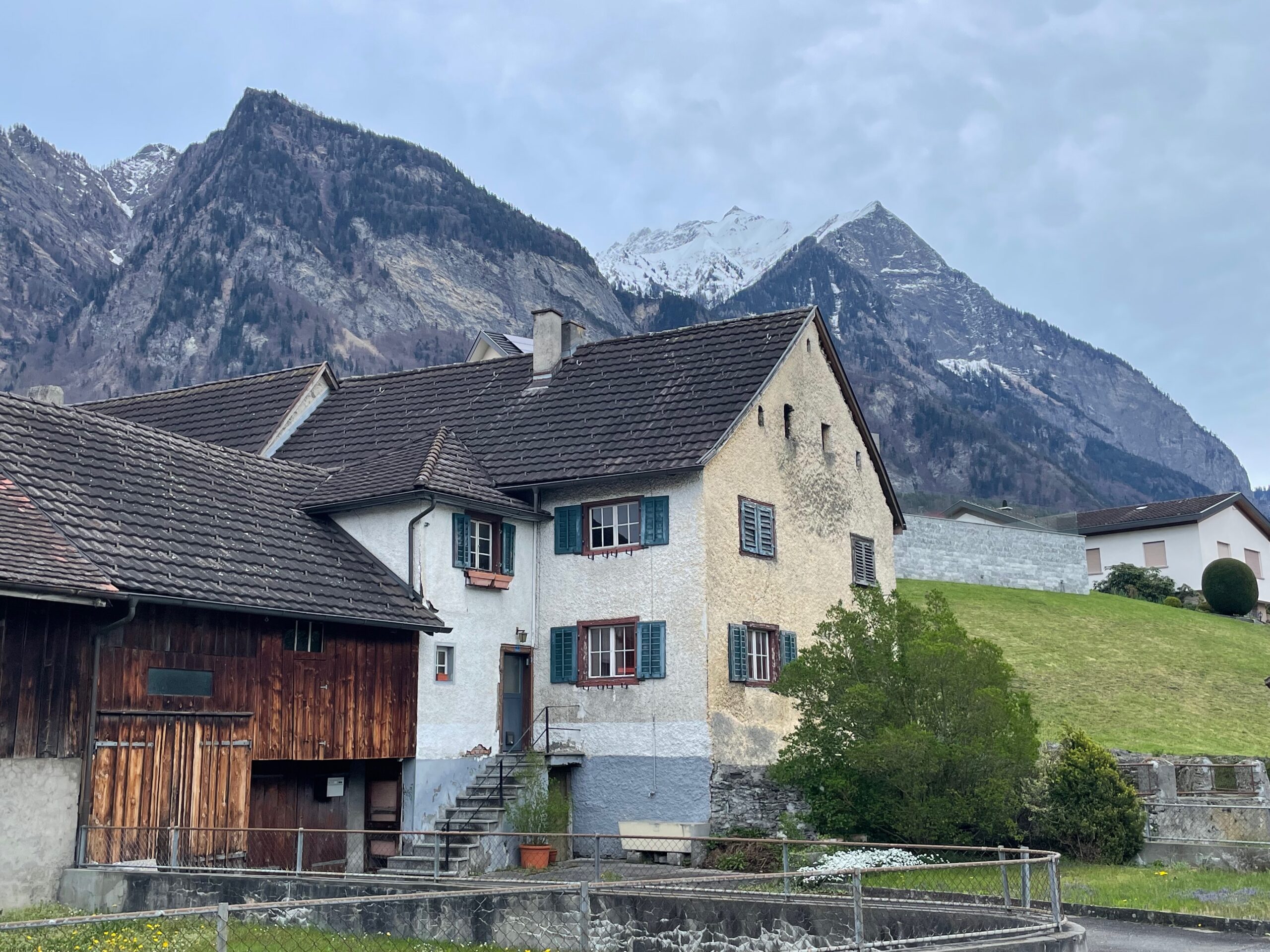 |
After a very charming hike in Balzers I went down to the bus stop. Waiting for my ride to Sargans I walked a bit along the streets to see local architecture and to catch some nice views at the mountains.
The ride to Sargans take only 10 minutes and from there you have plenty of trains to Zurich (direct trains without intermediate stops). I find the train route Zurich-Sargans very scenic so try to sit close to the window and don’t miss the views while looking at your phone!
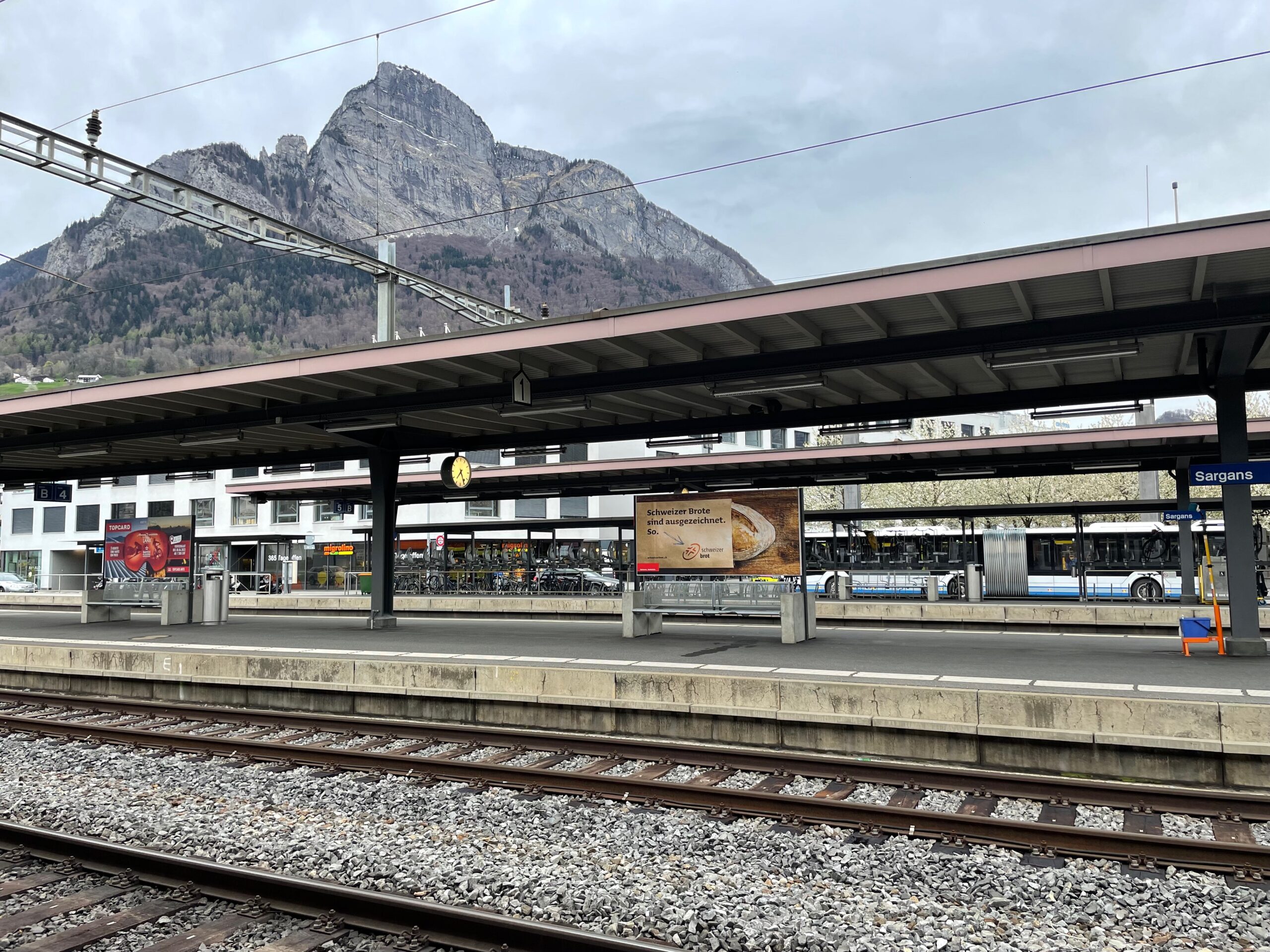 |
I think that it’s completely possible to see 1 or 2 more towns in Liechtenstein even if relying completely on public transport, the buses are reliable and punctual, they also operate quite frequently. I didn’t want to be much in rush and spend 3 hours in the museums so I simply didn’t manage to see more places but I guess you can definitely extend your itinerary since mine was not very intense (I took my time in the museums and stopped for photos). If you plan to travel more by buses, think to get a daily ticket which will allow you unlimited bus trips, you can purchase it from the driver, the payments in cash and card are both accepted.
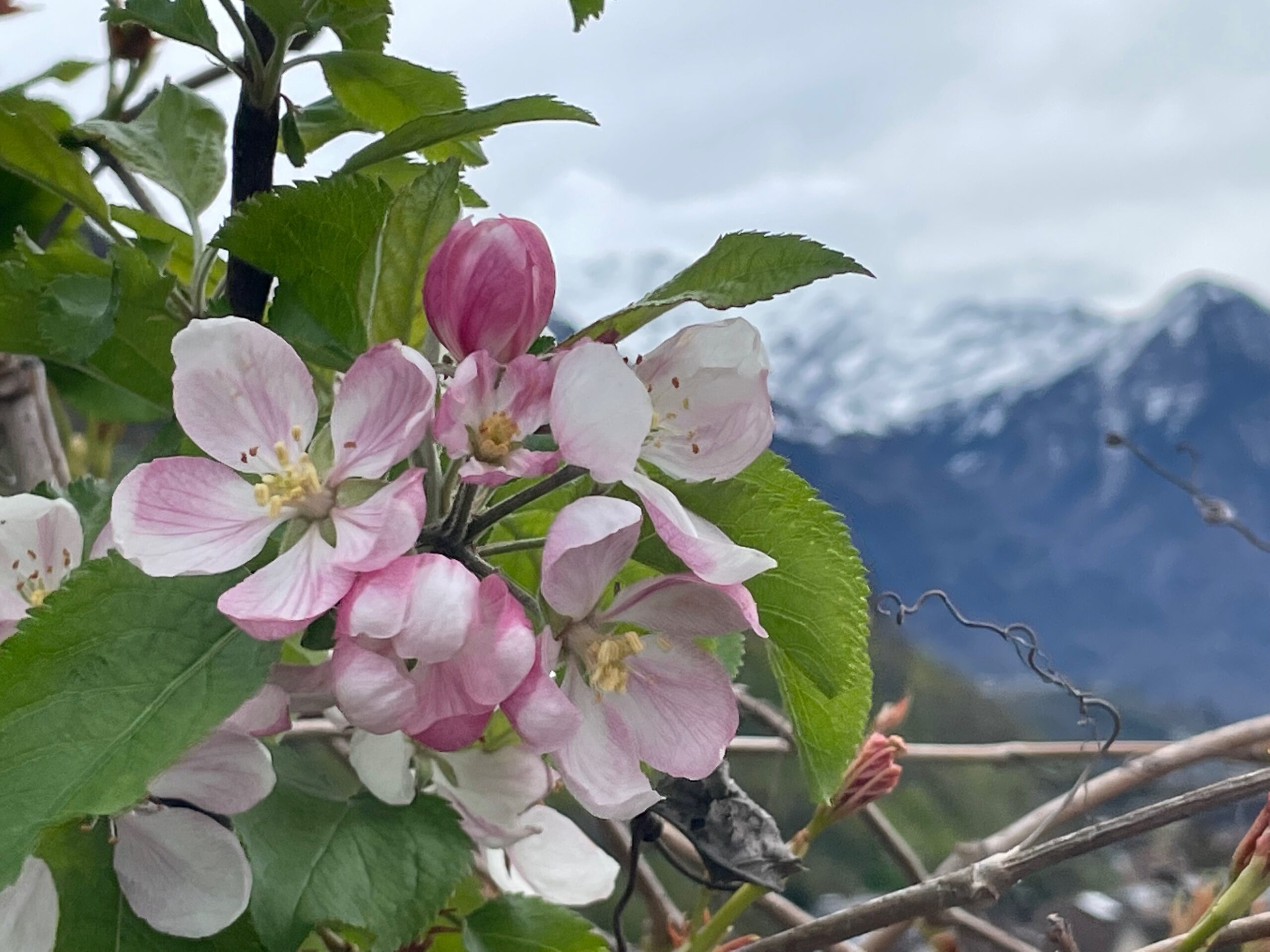 |
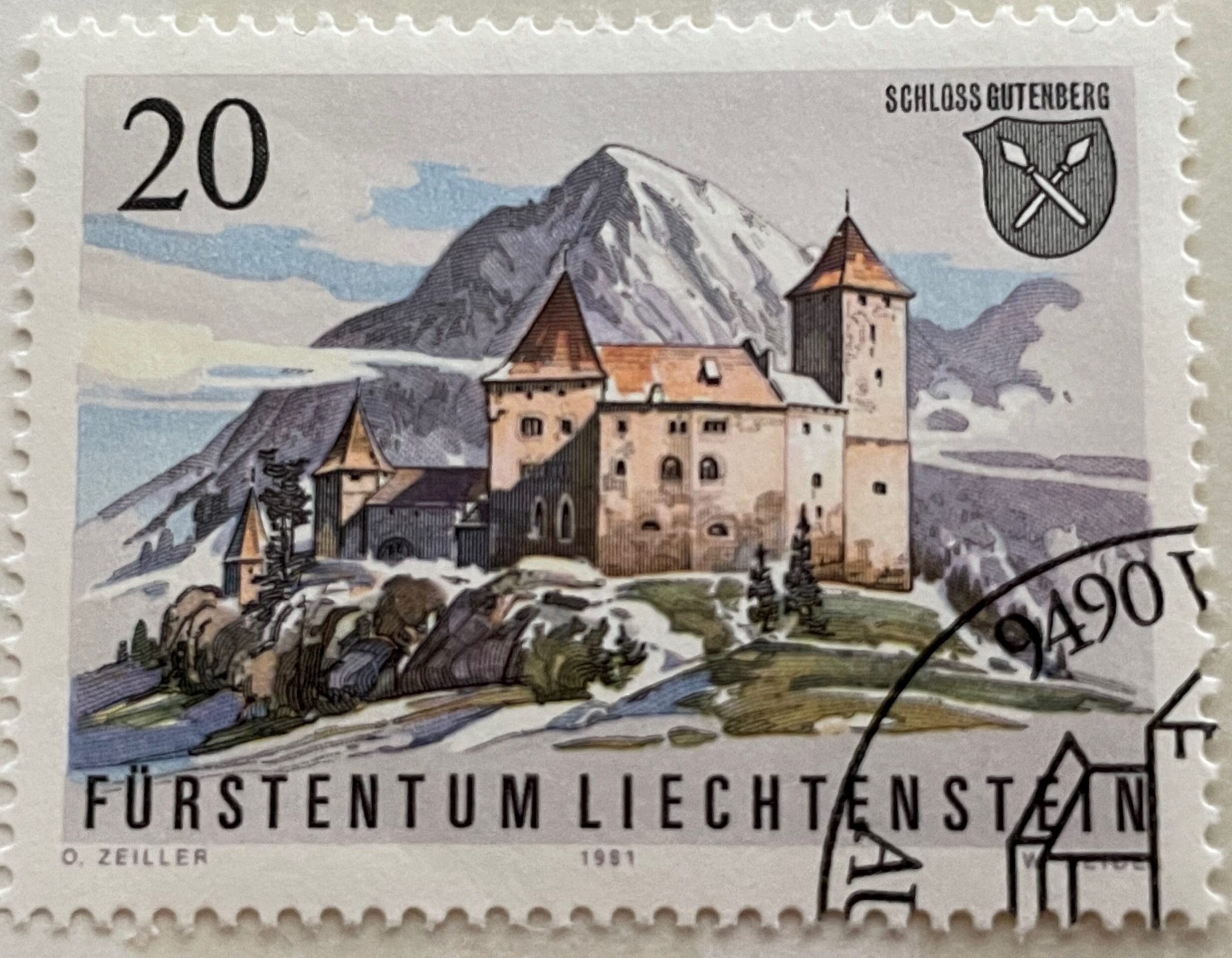
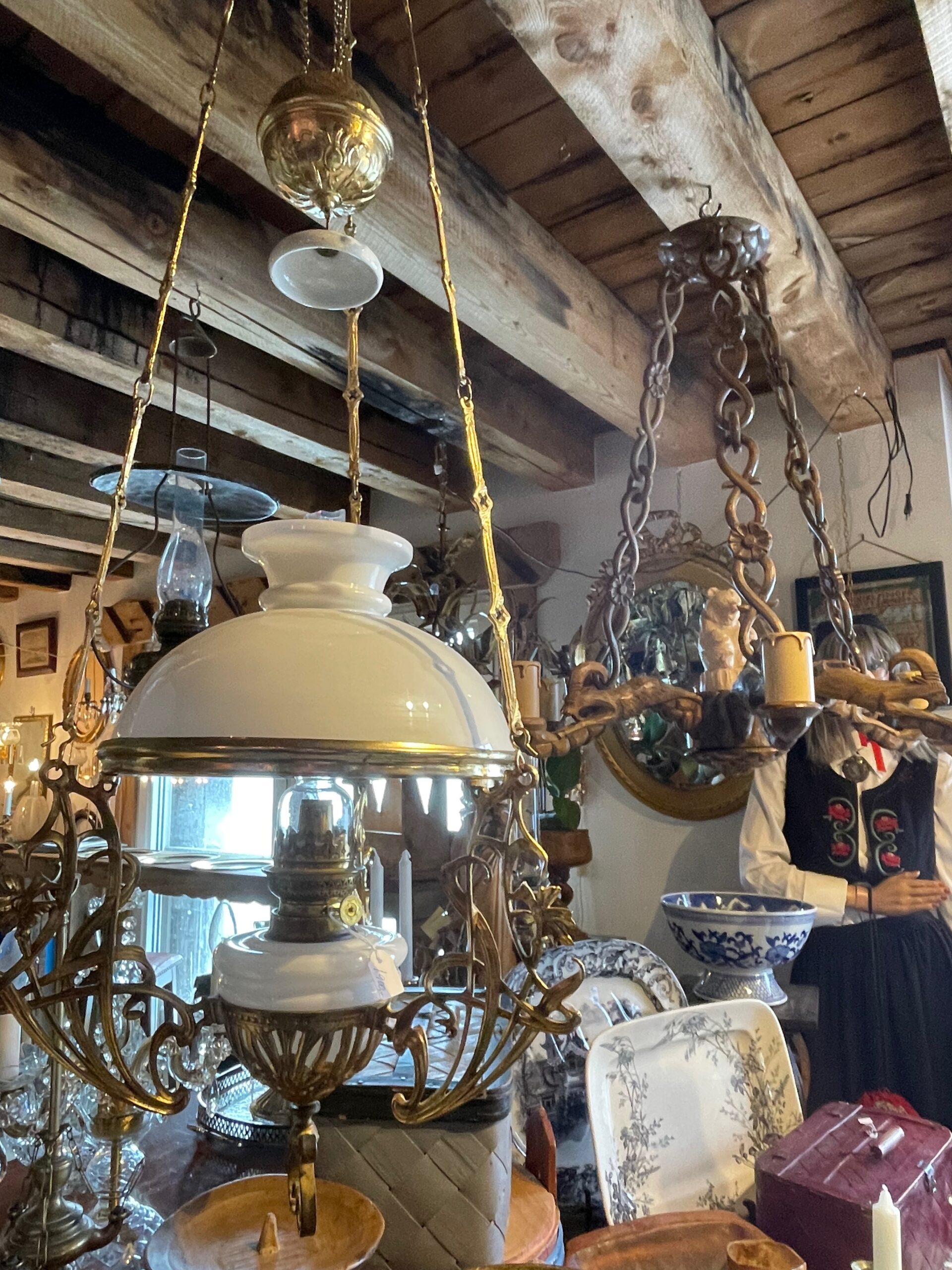
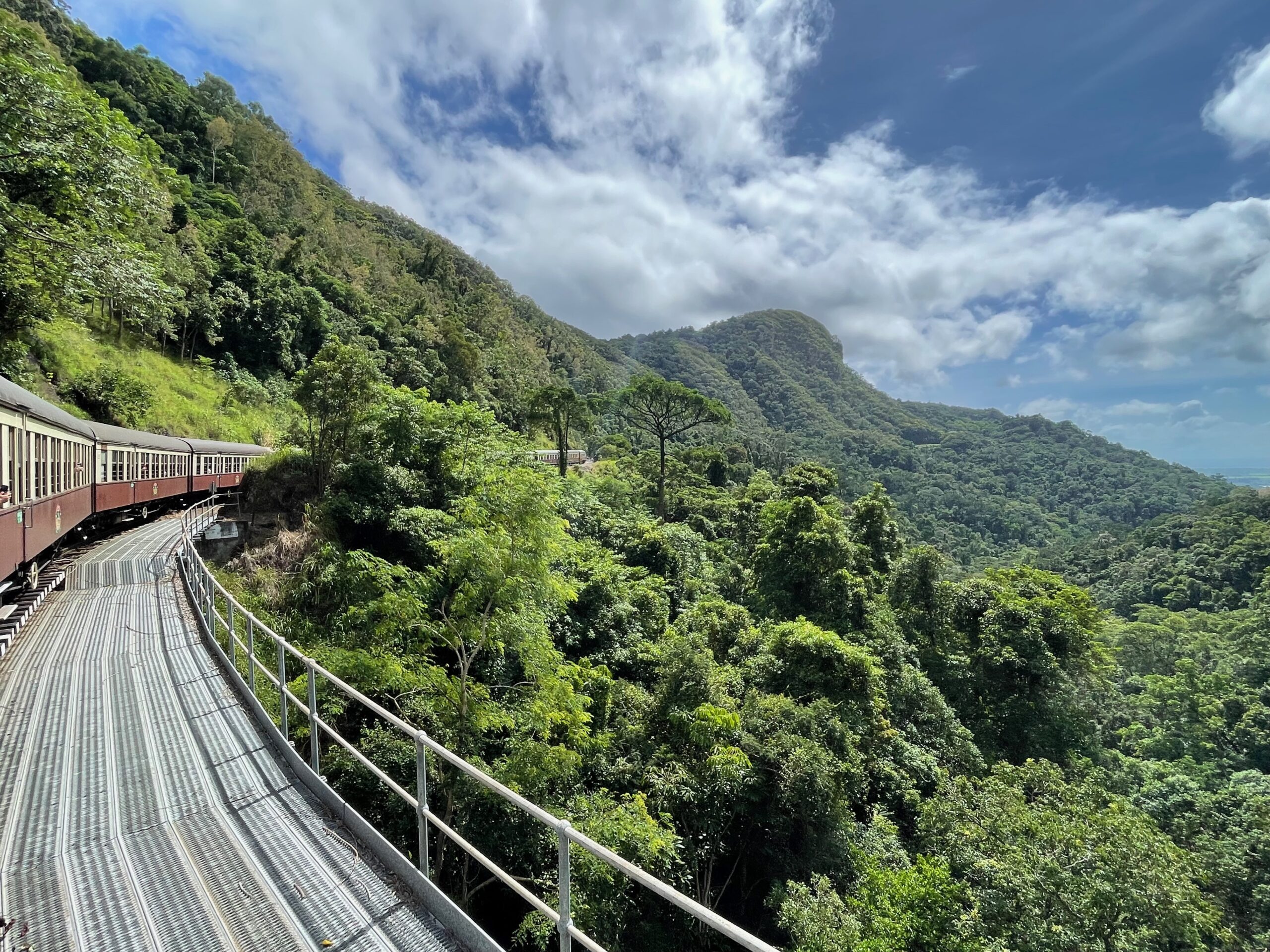
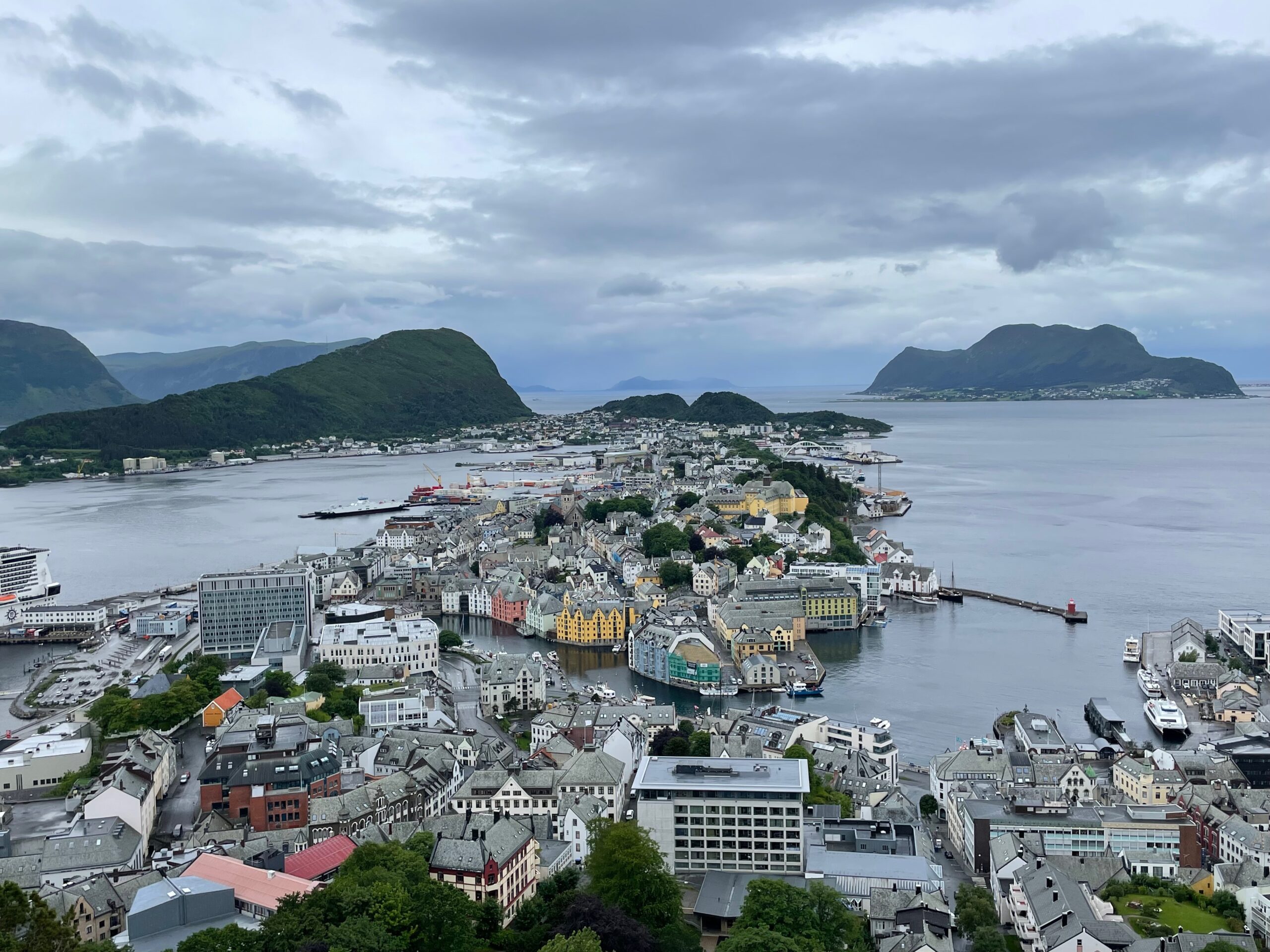
I was just thinking how to get around Liechtenstein without a car, good to know that the buses are reliable. Do you know if the buses to Austria are as frequent as from Swiss side?
Amazing blog! As I’m planning my trip, is Liechtenstein more expensive than Switzerland? Like coffee places or museums or public transport?